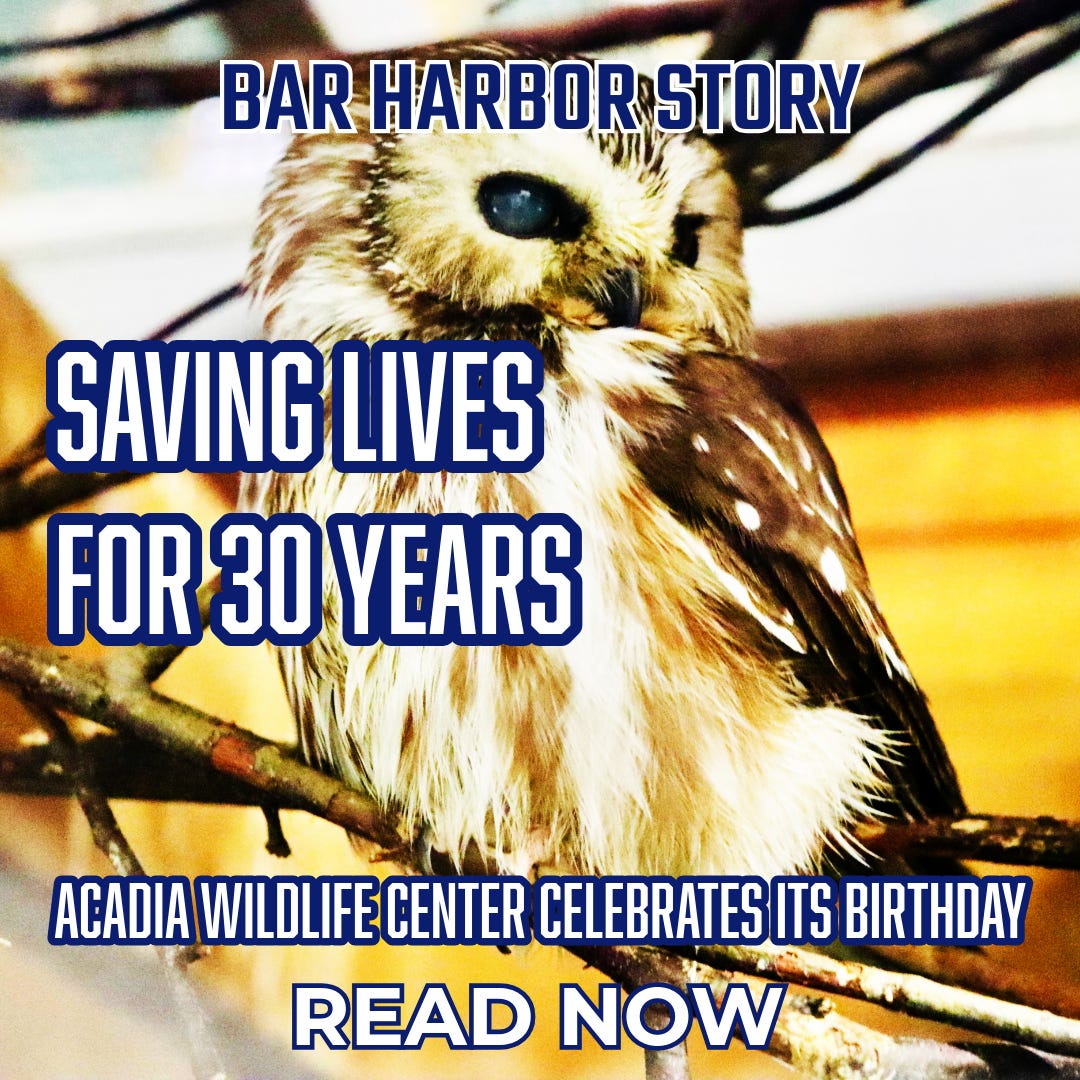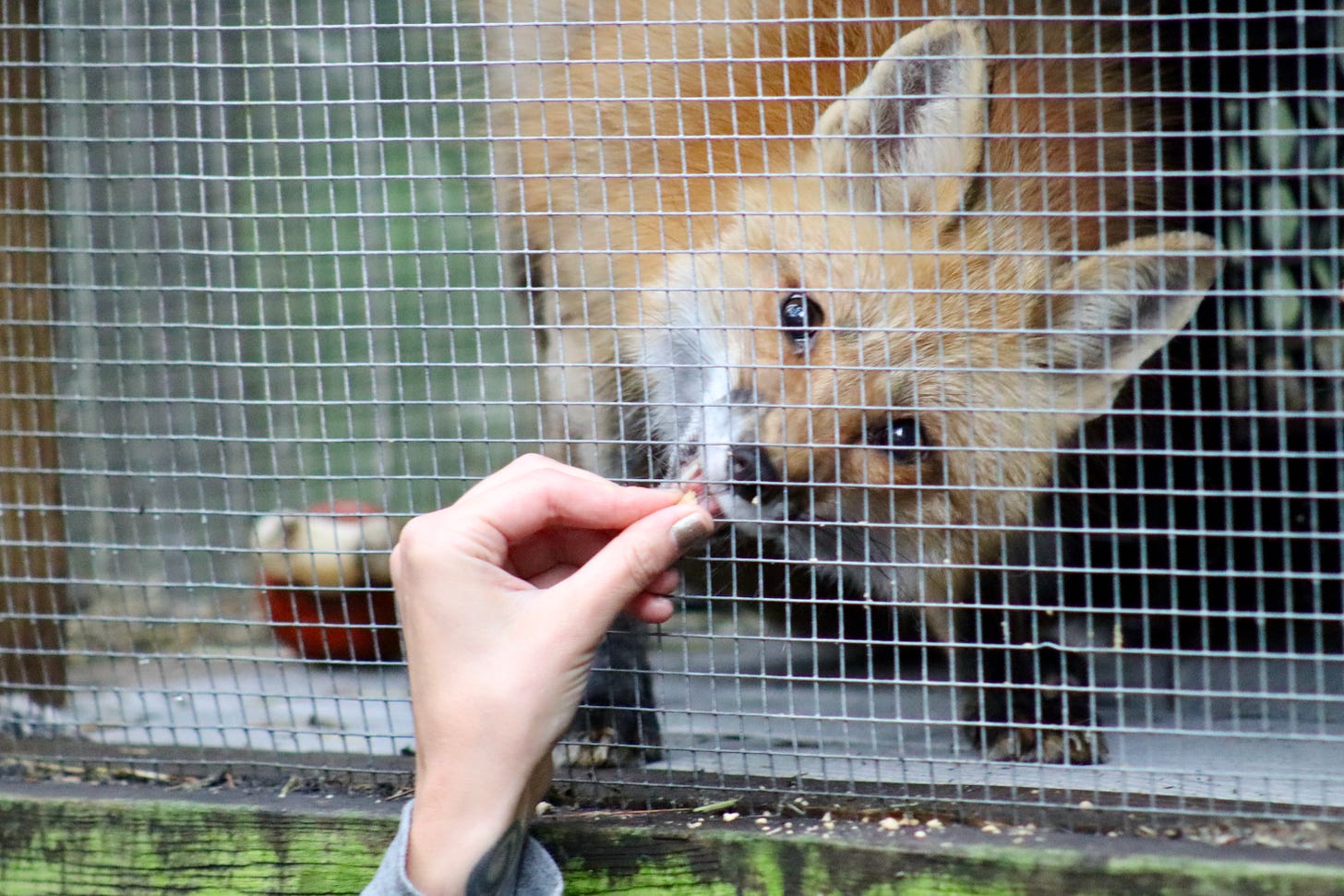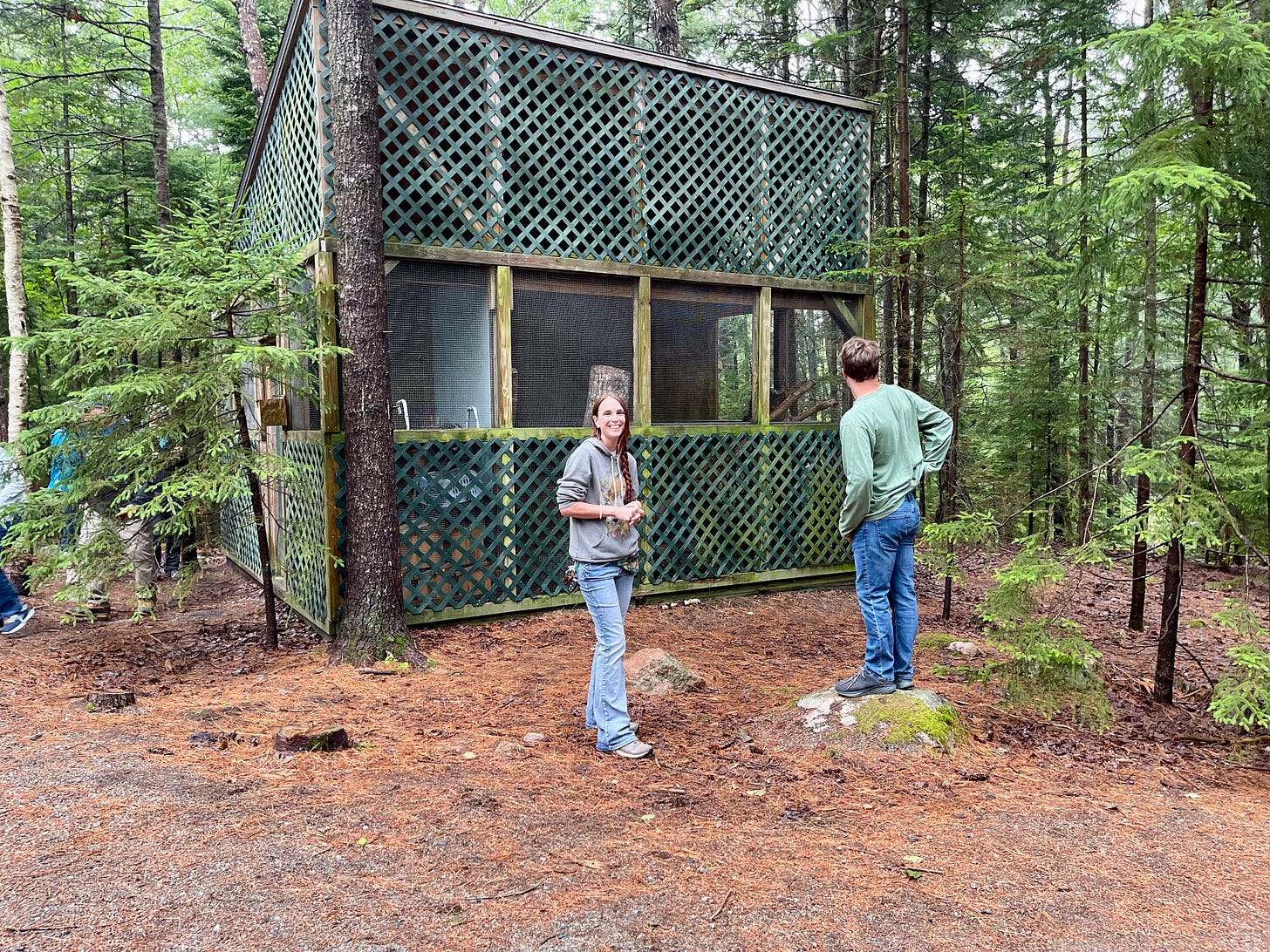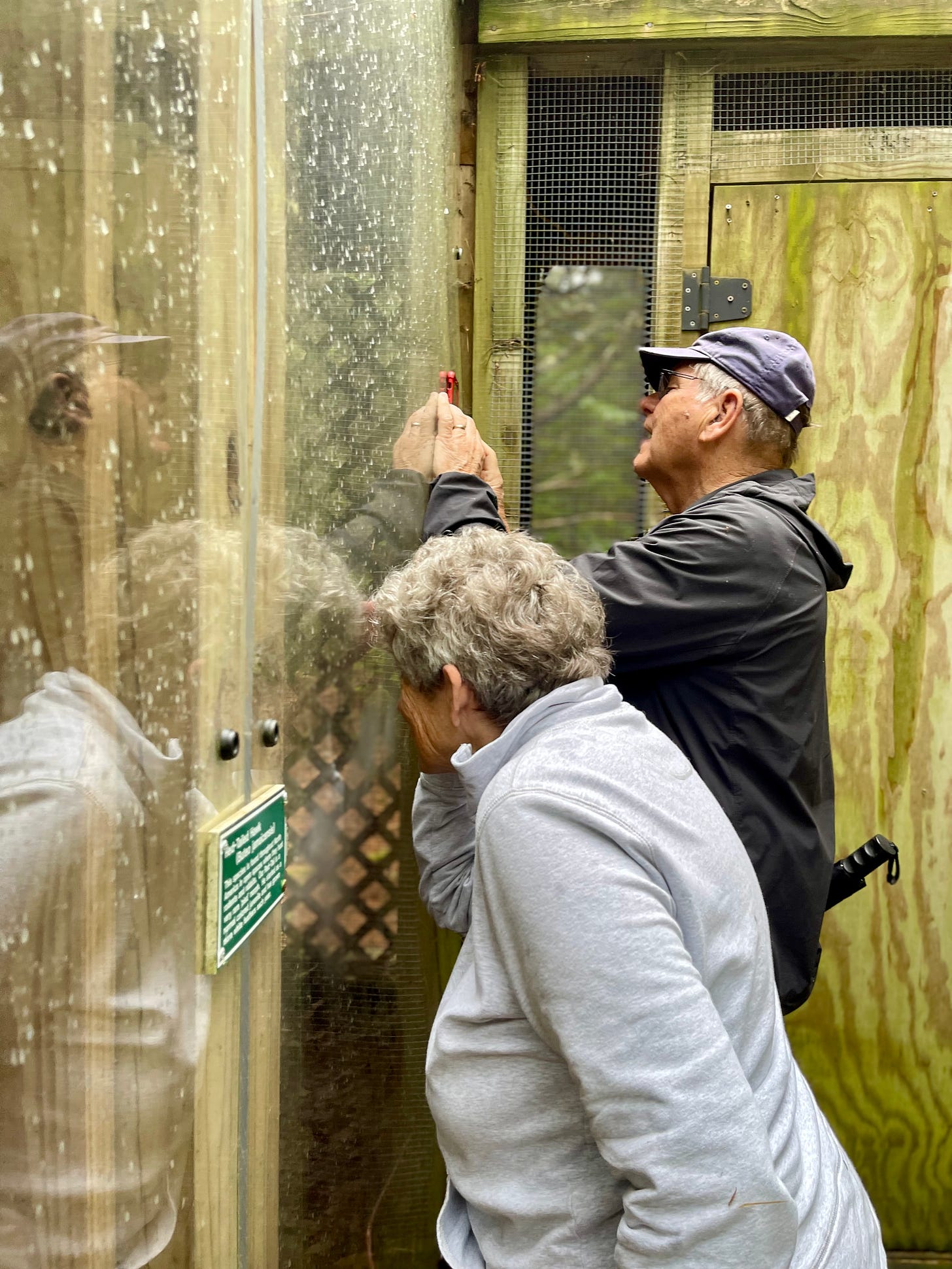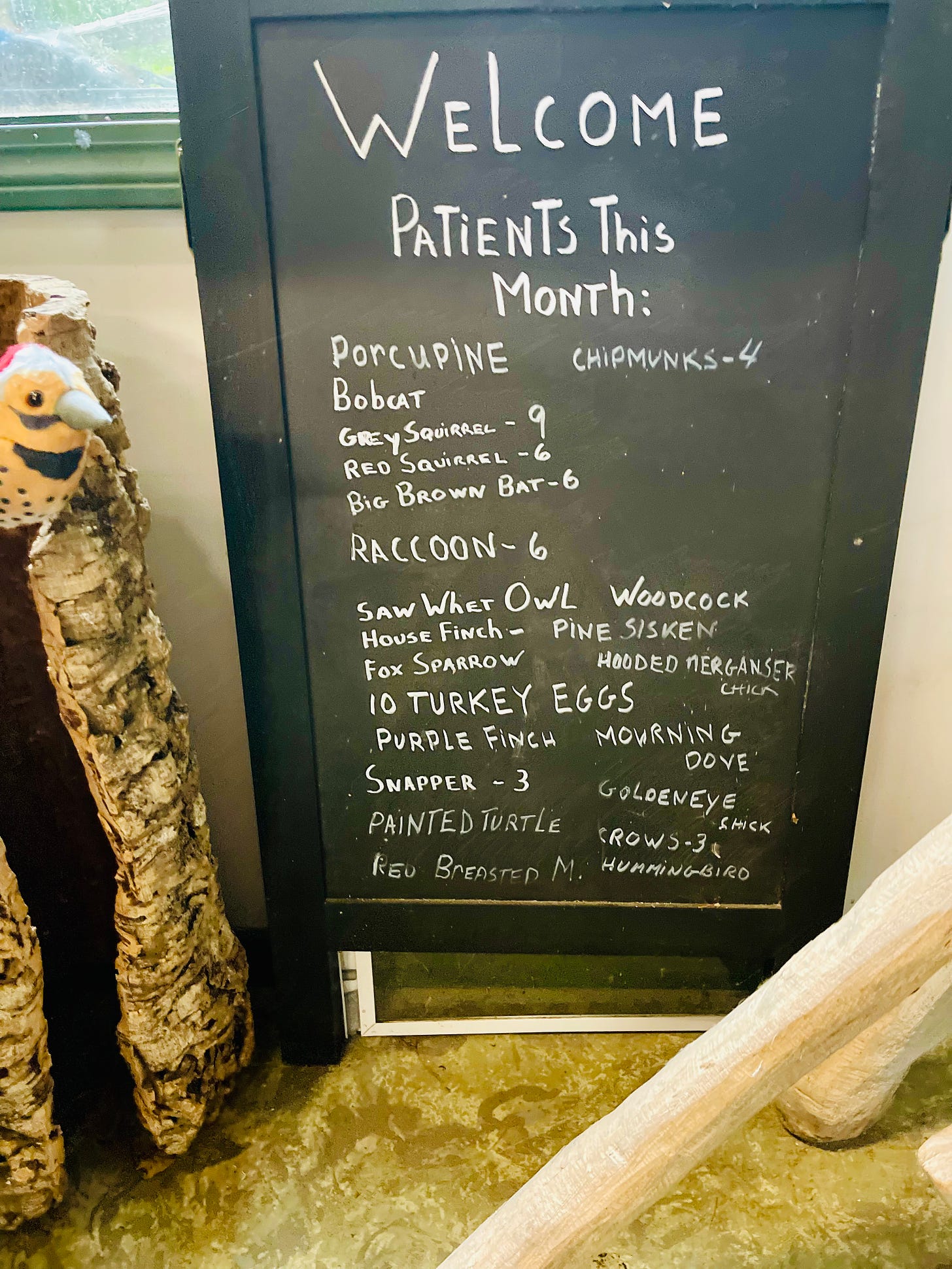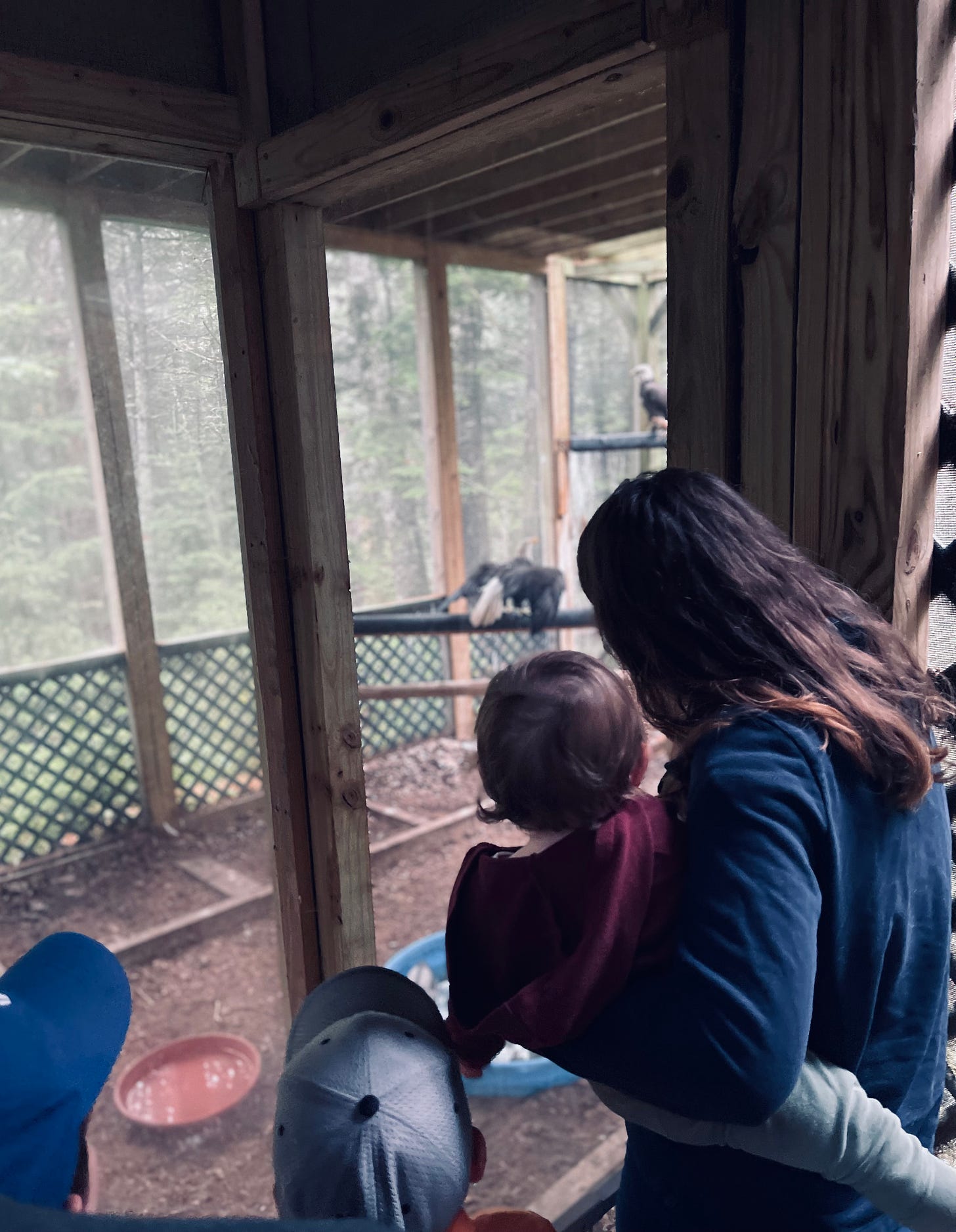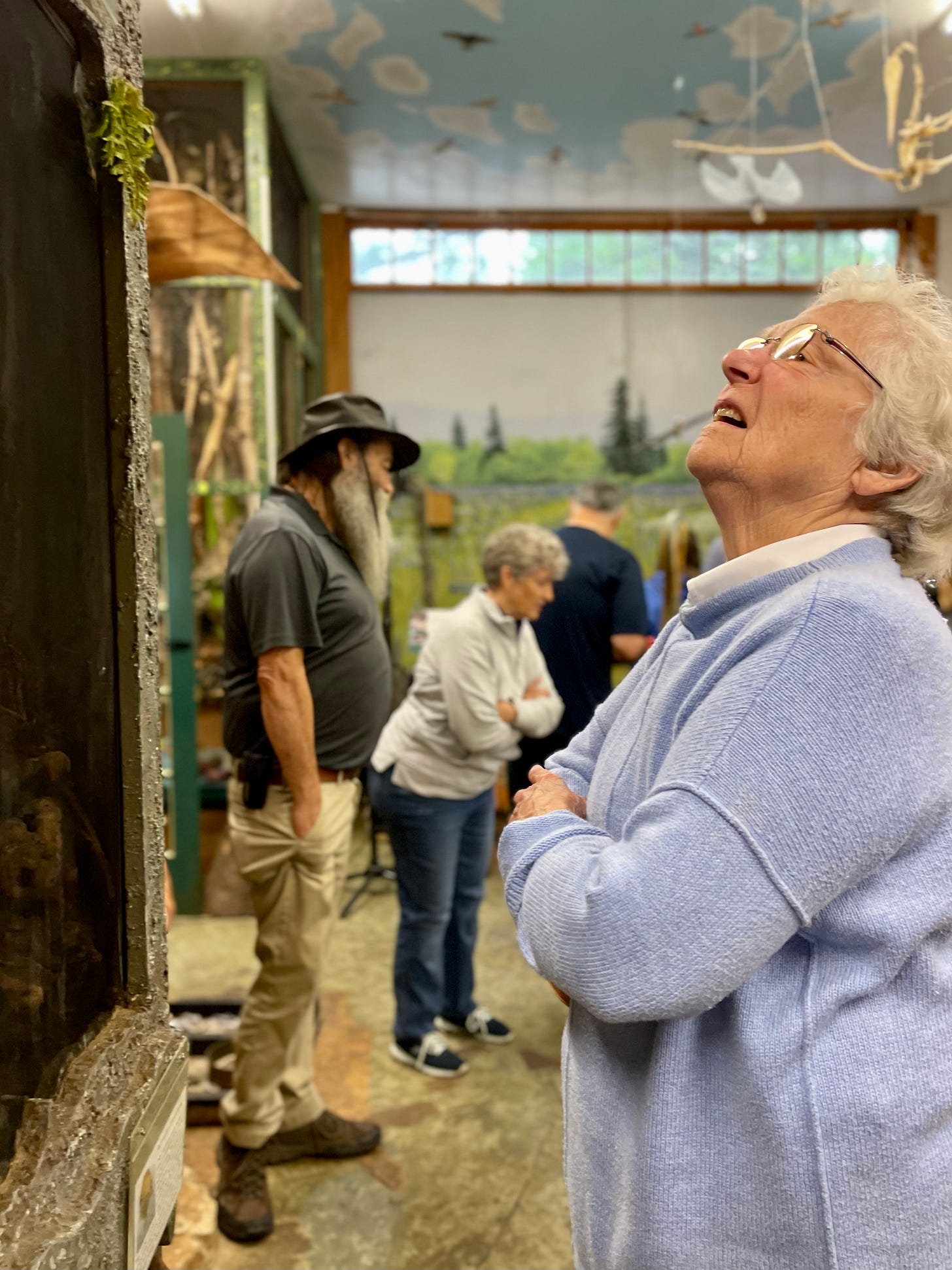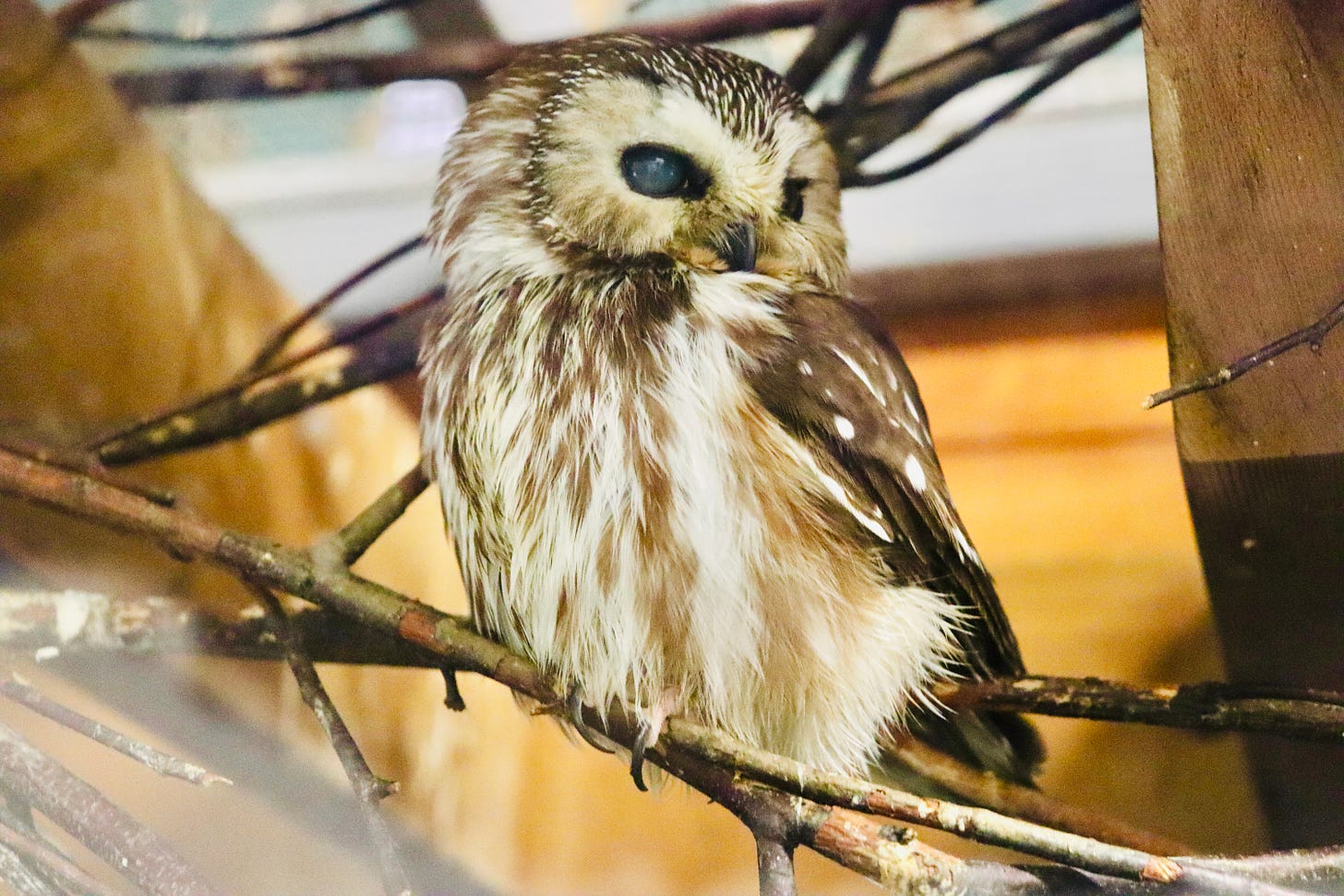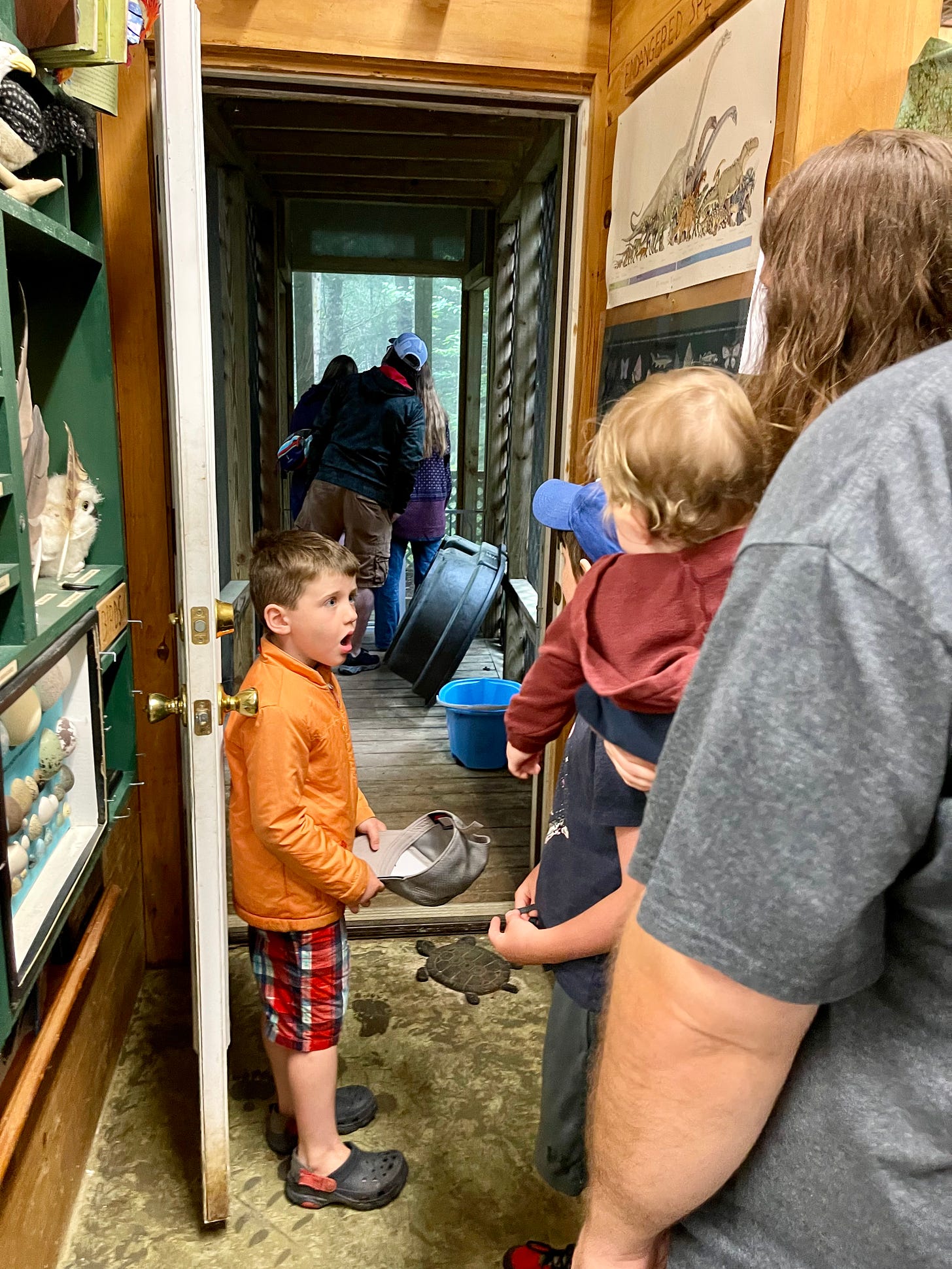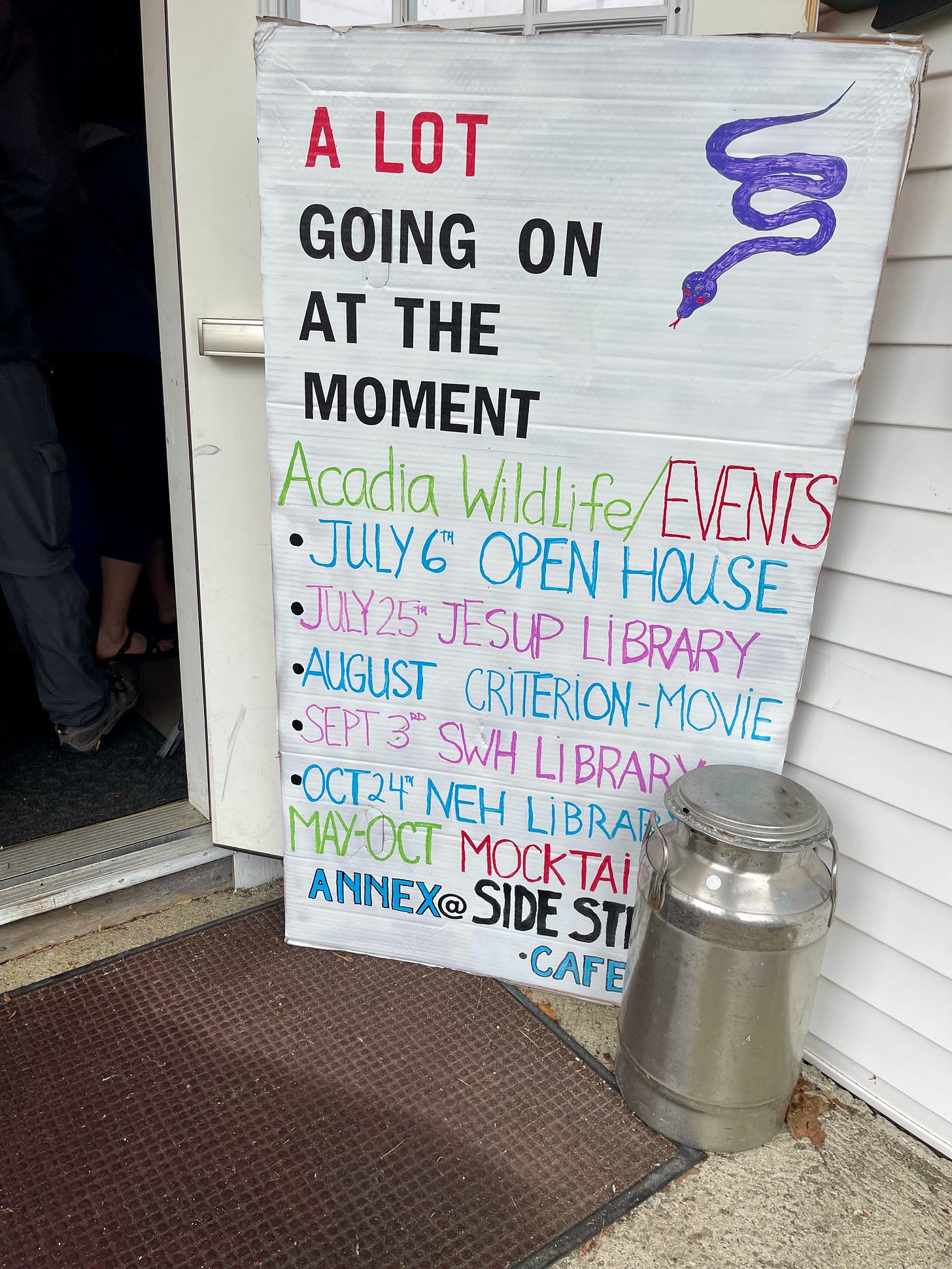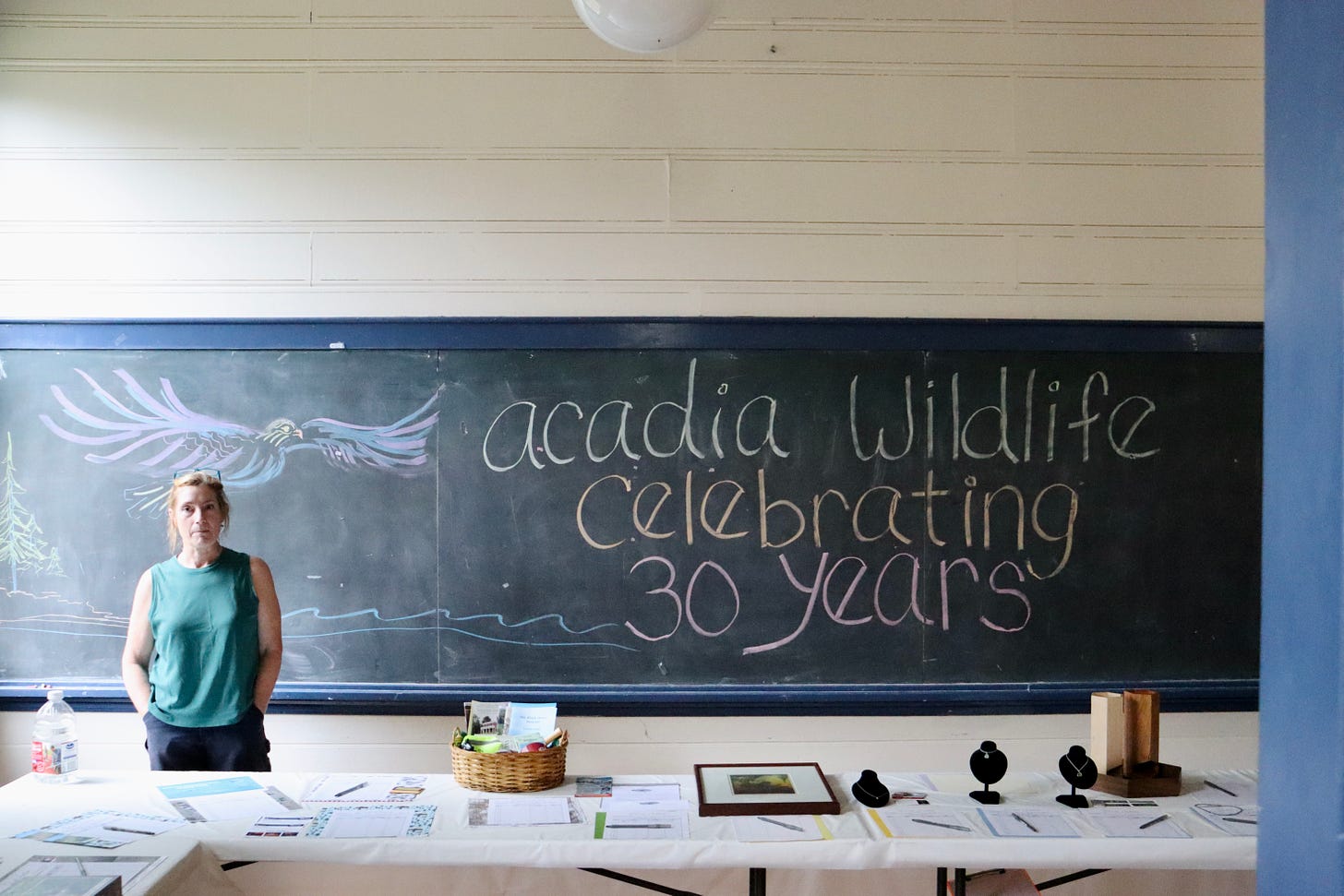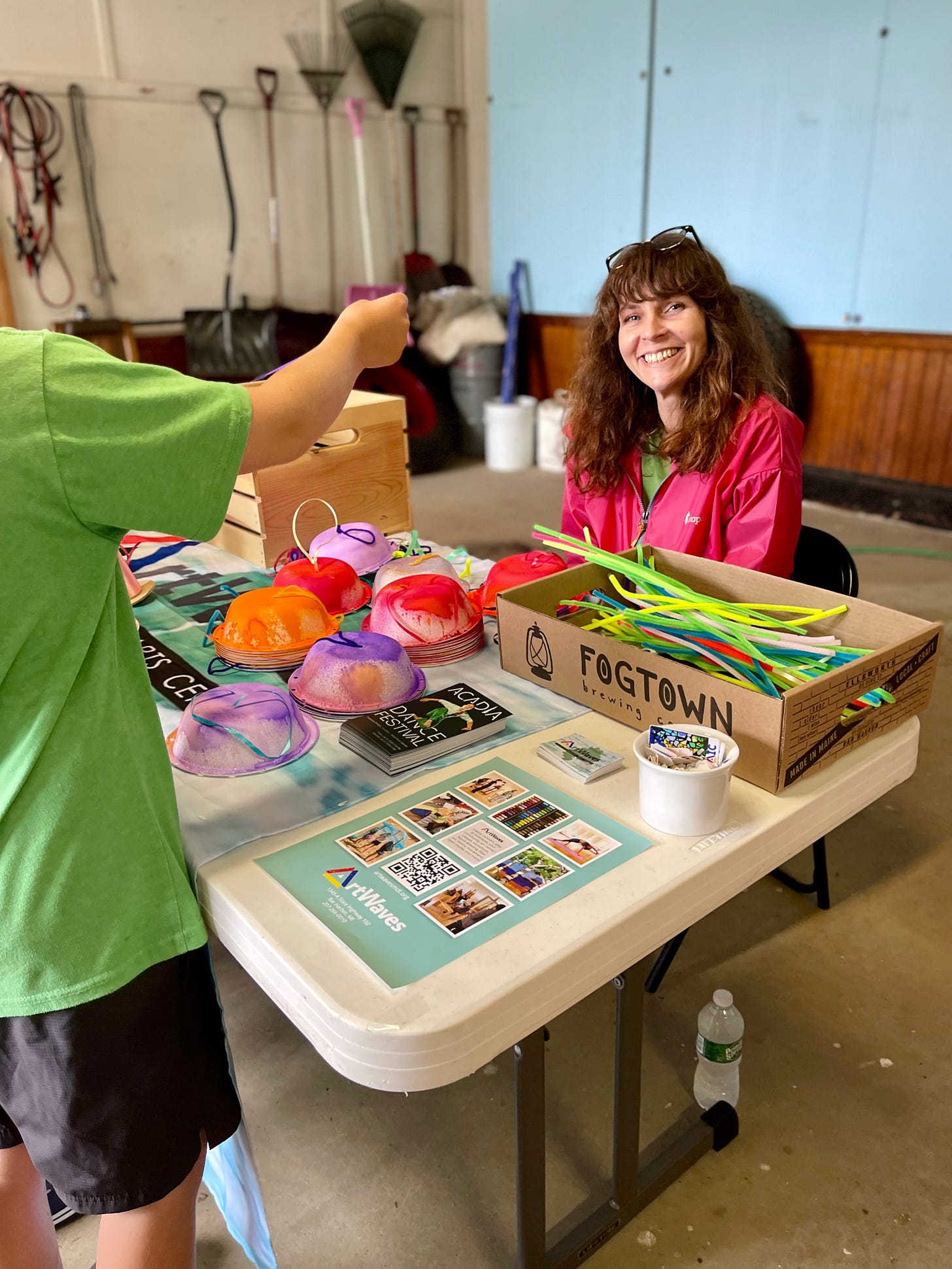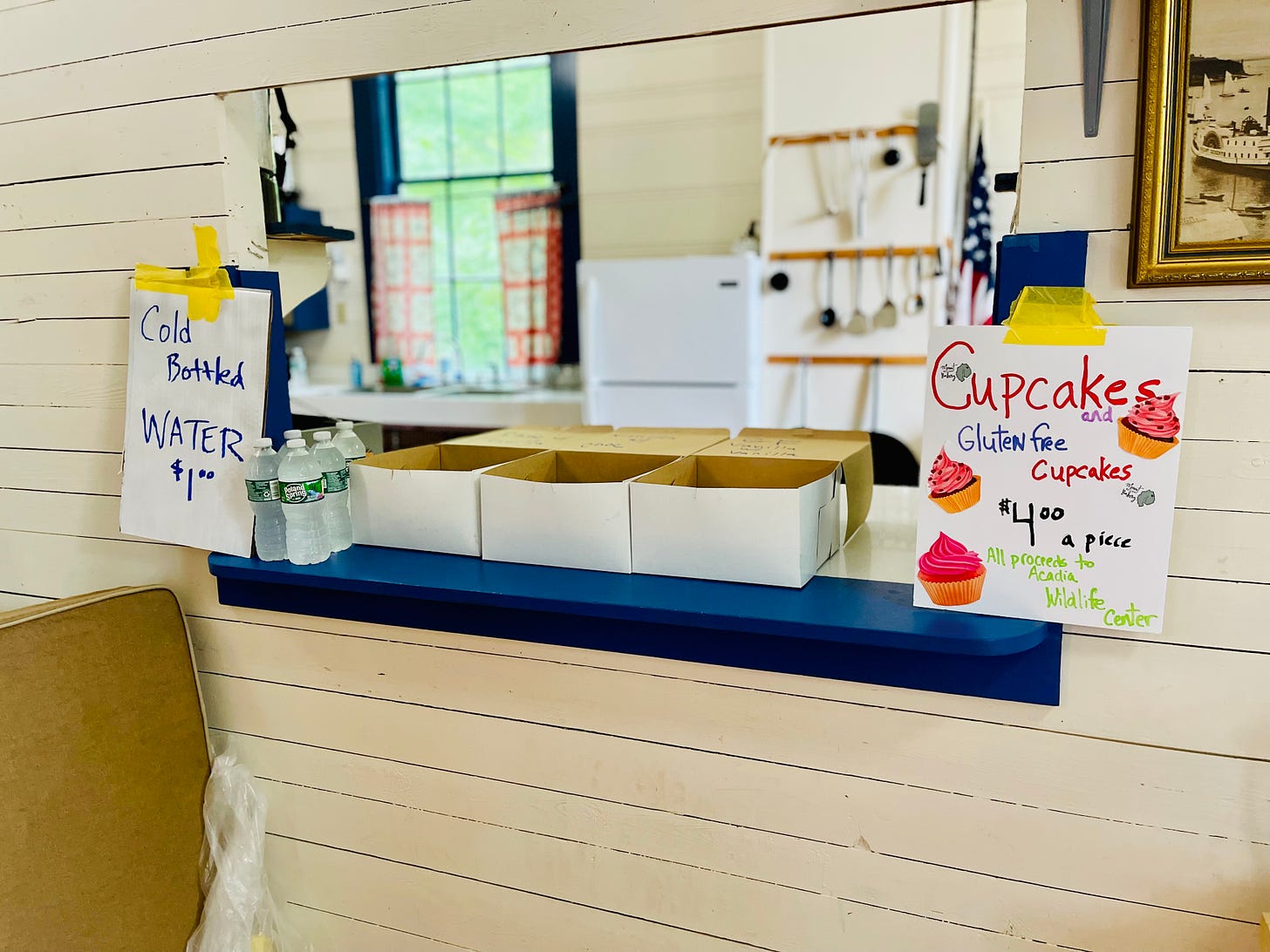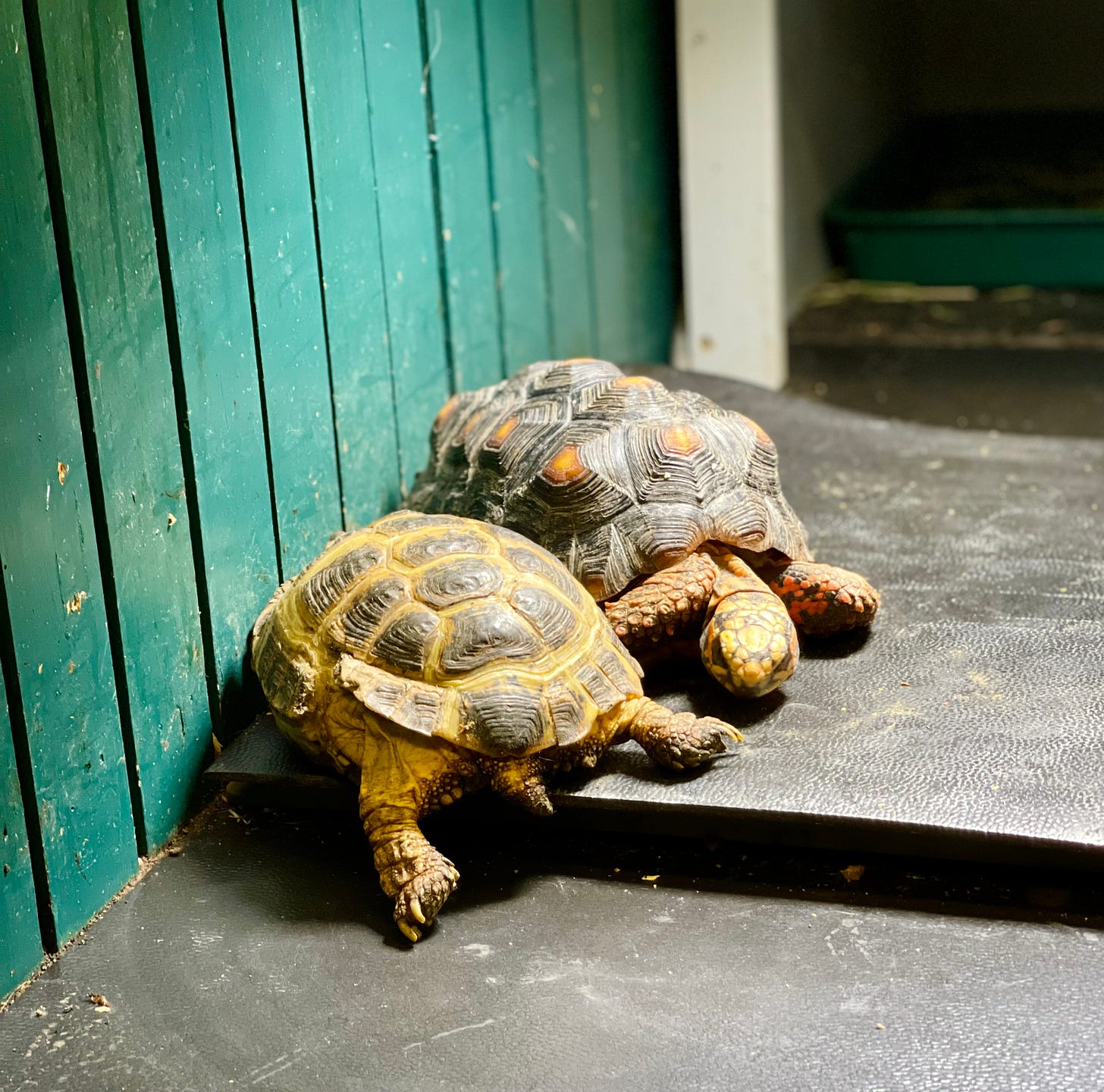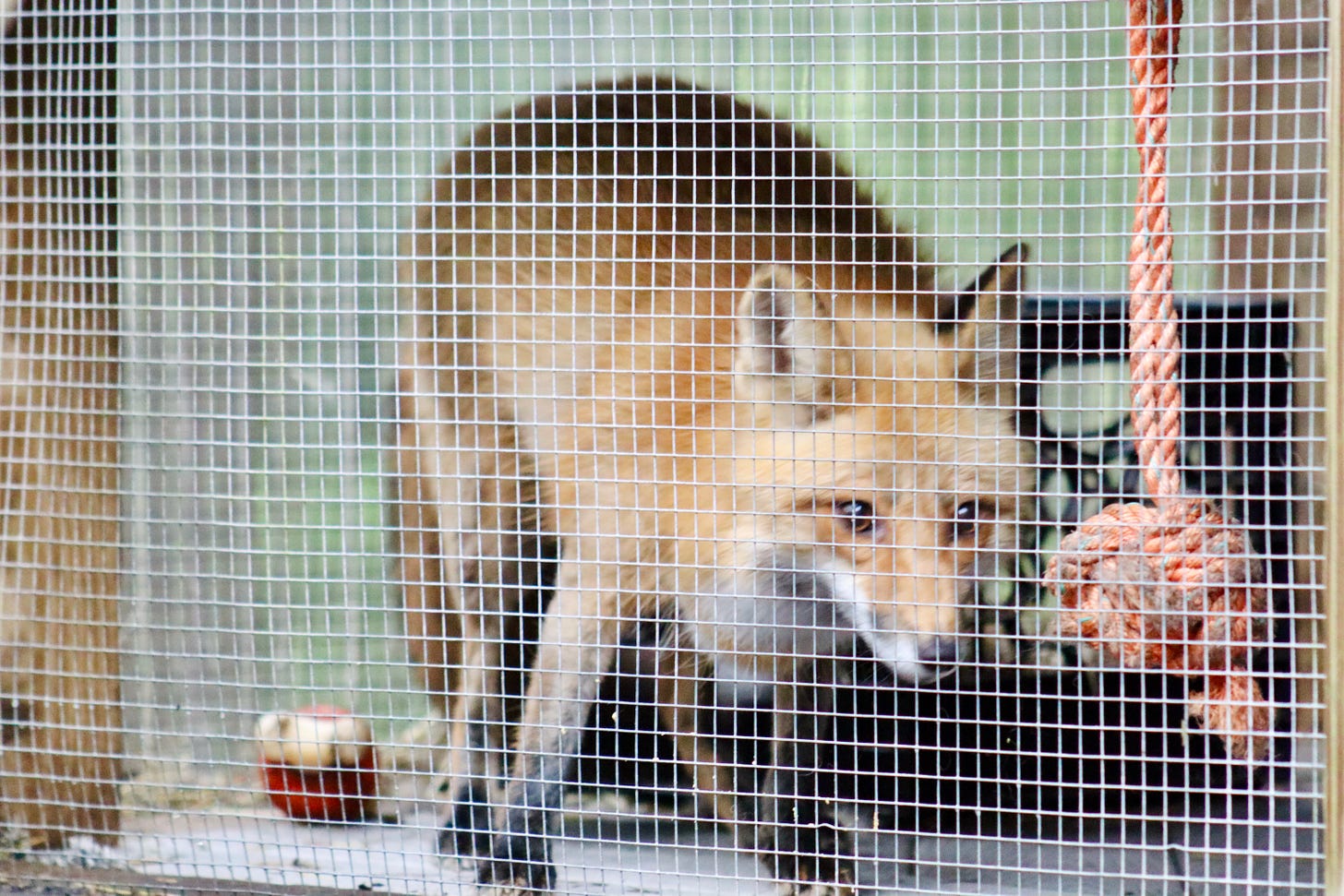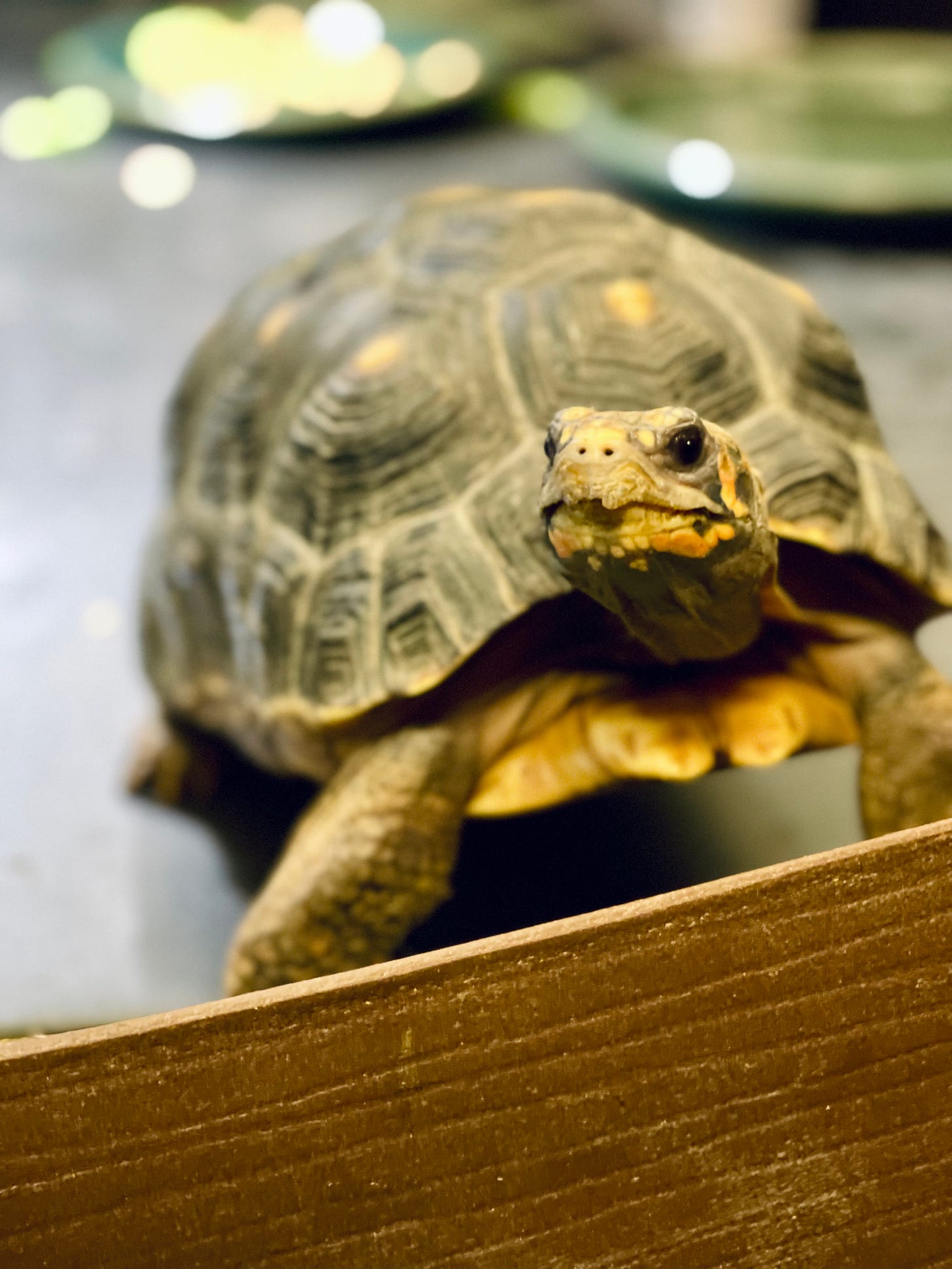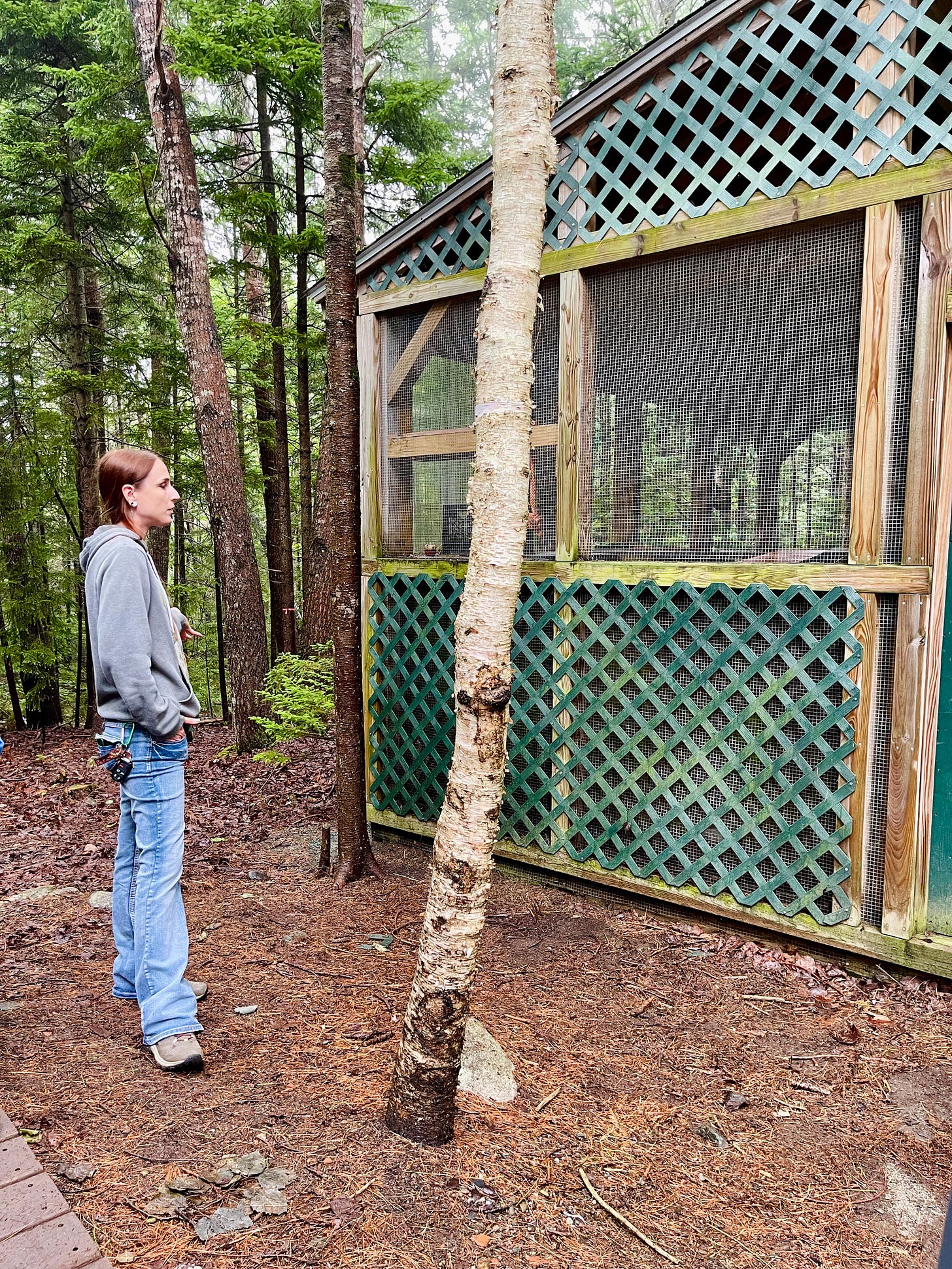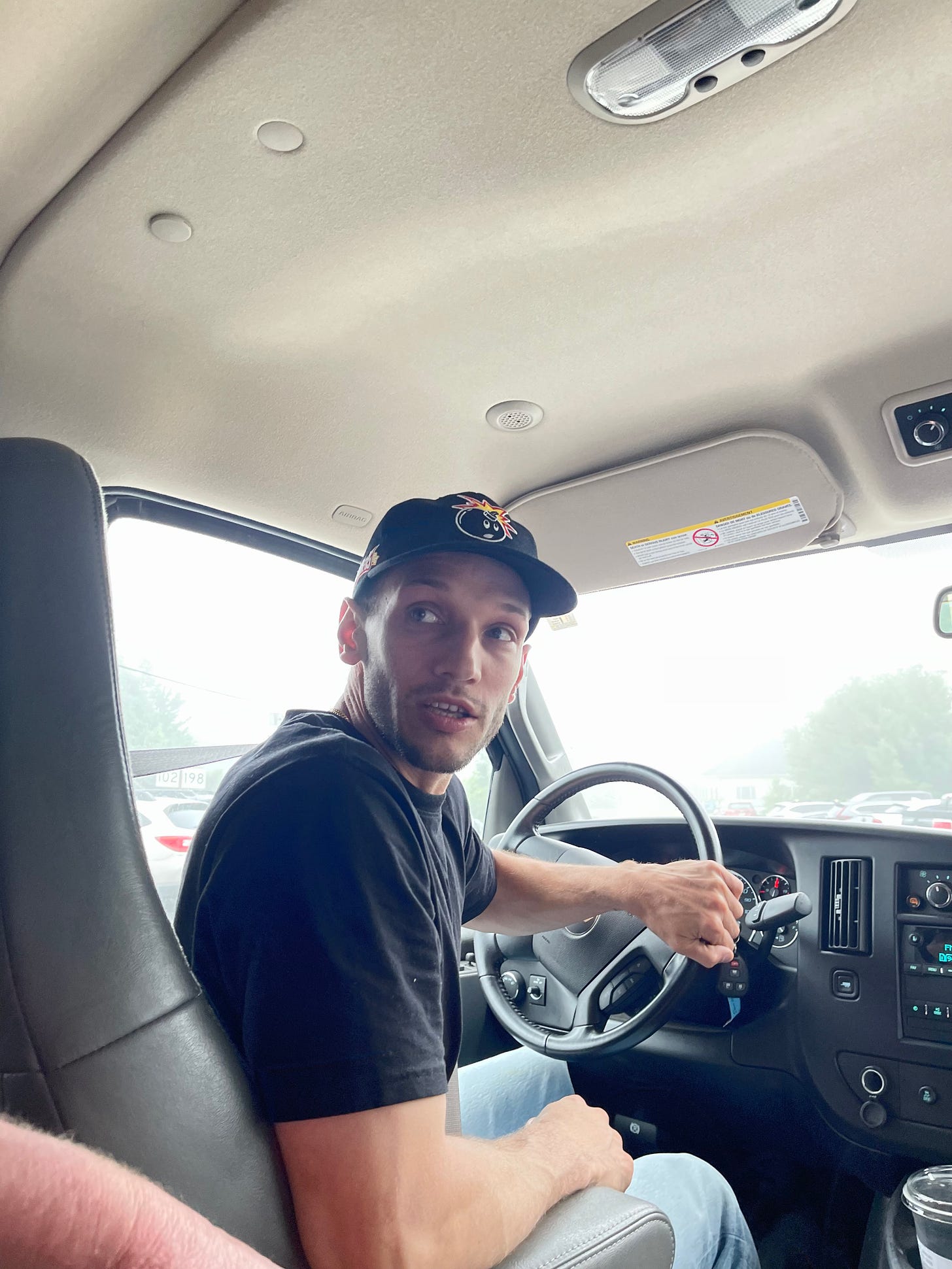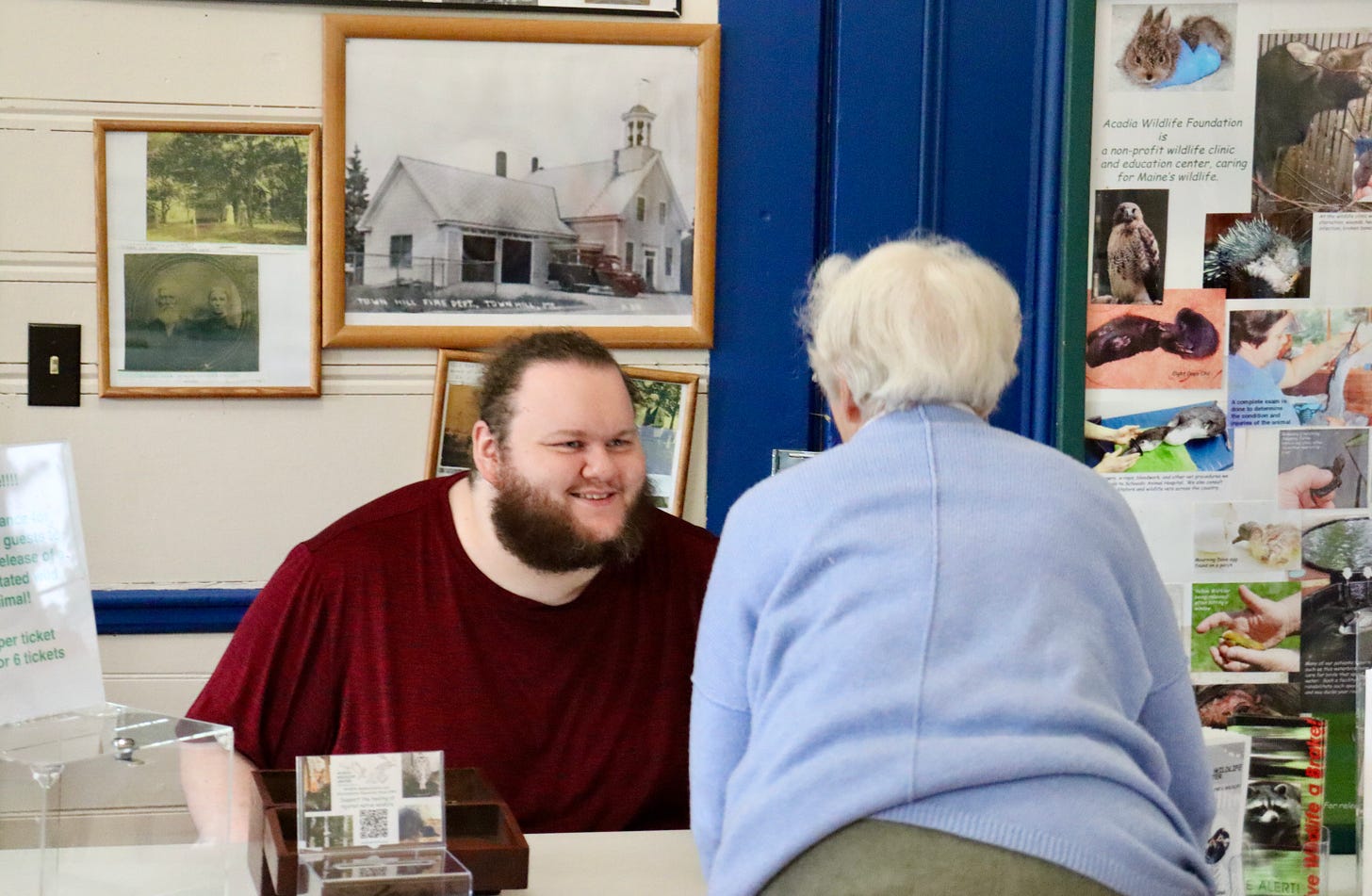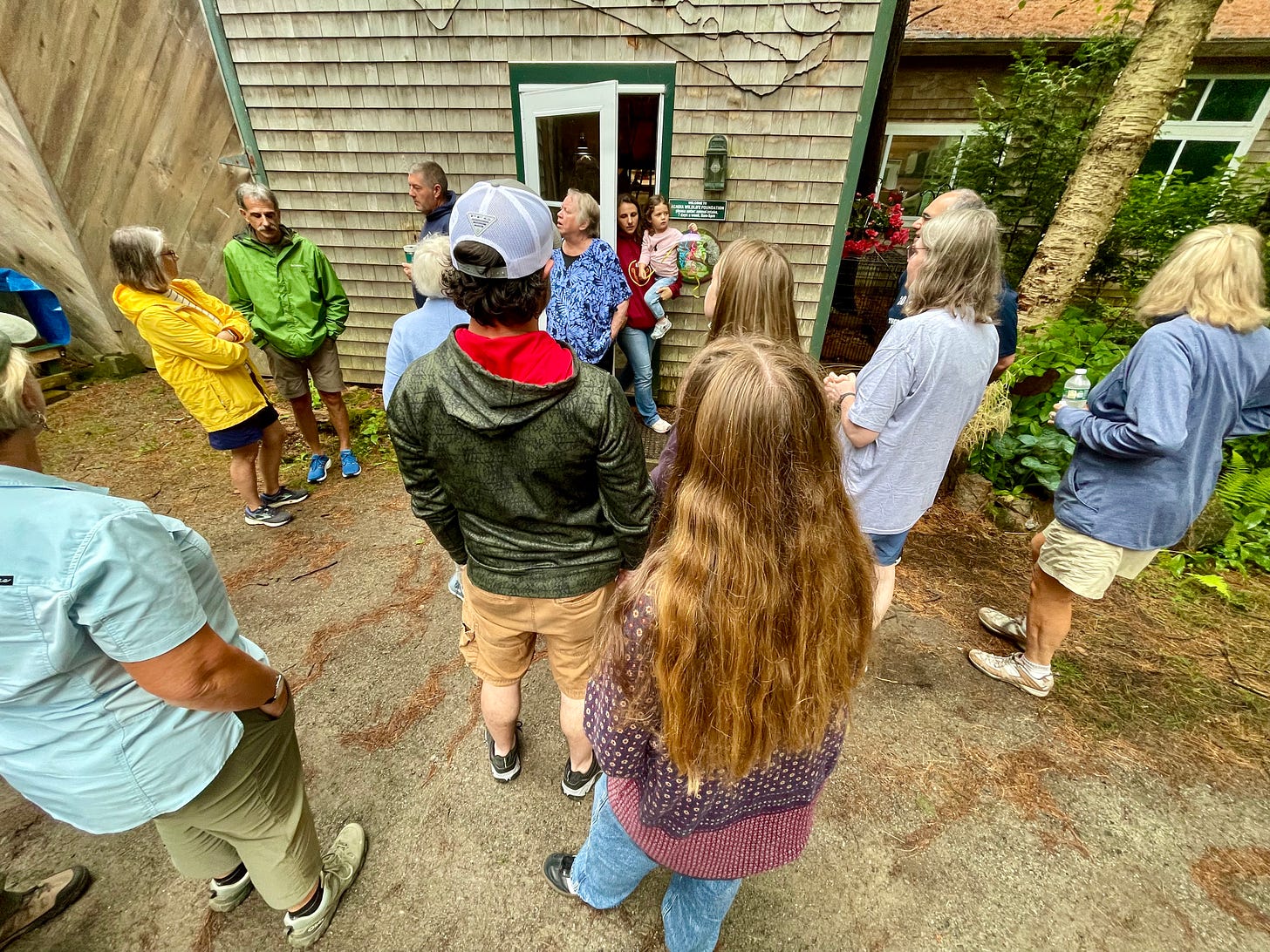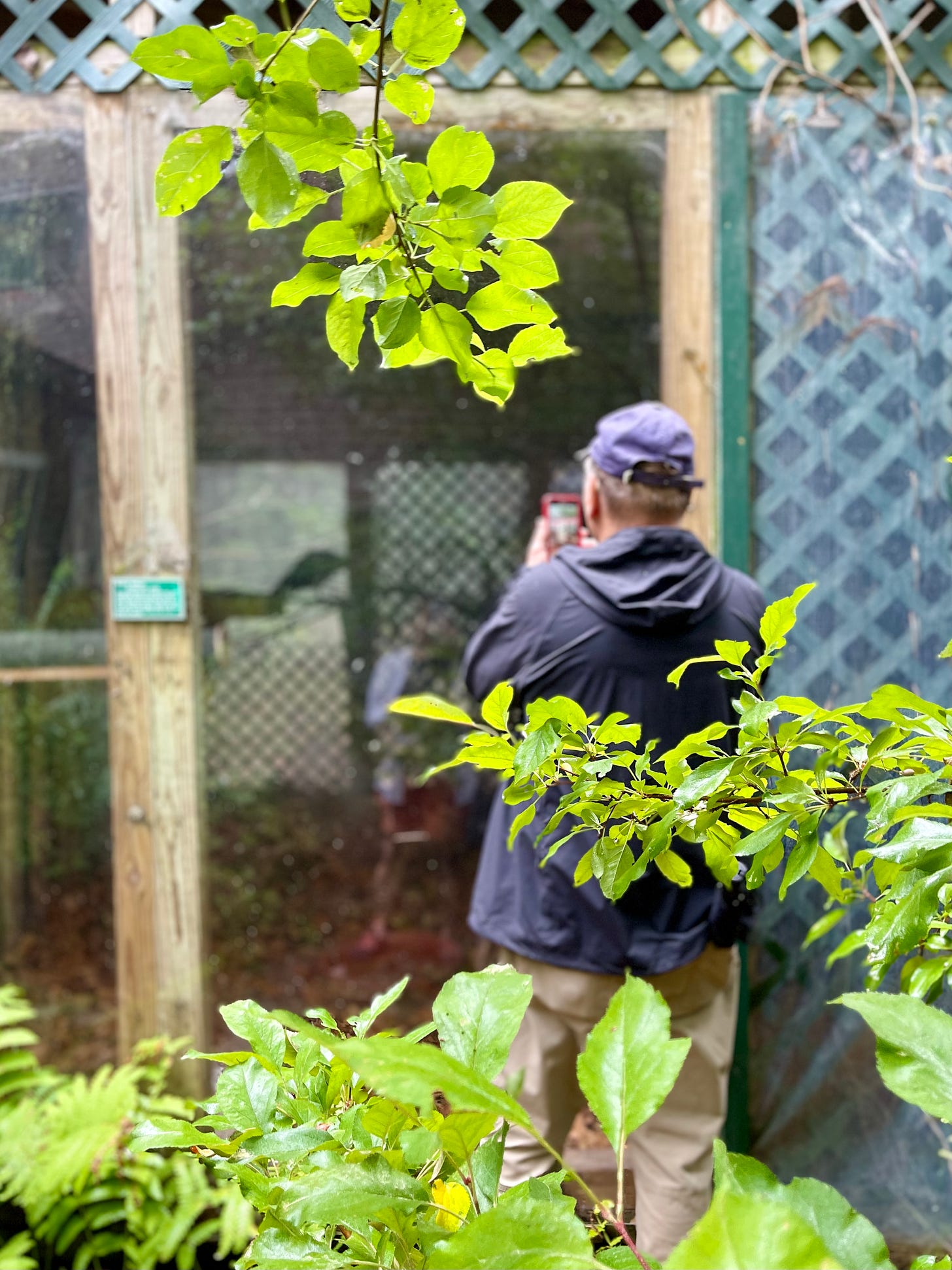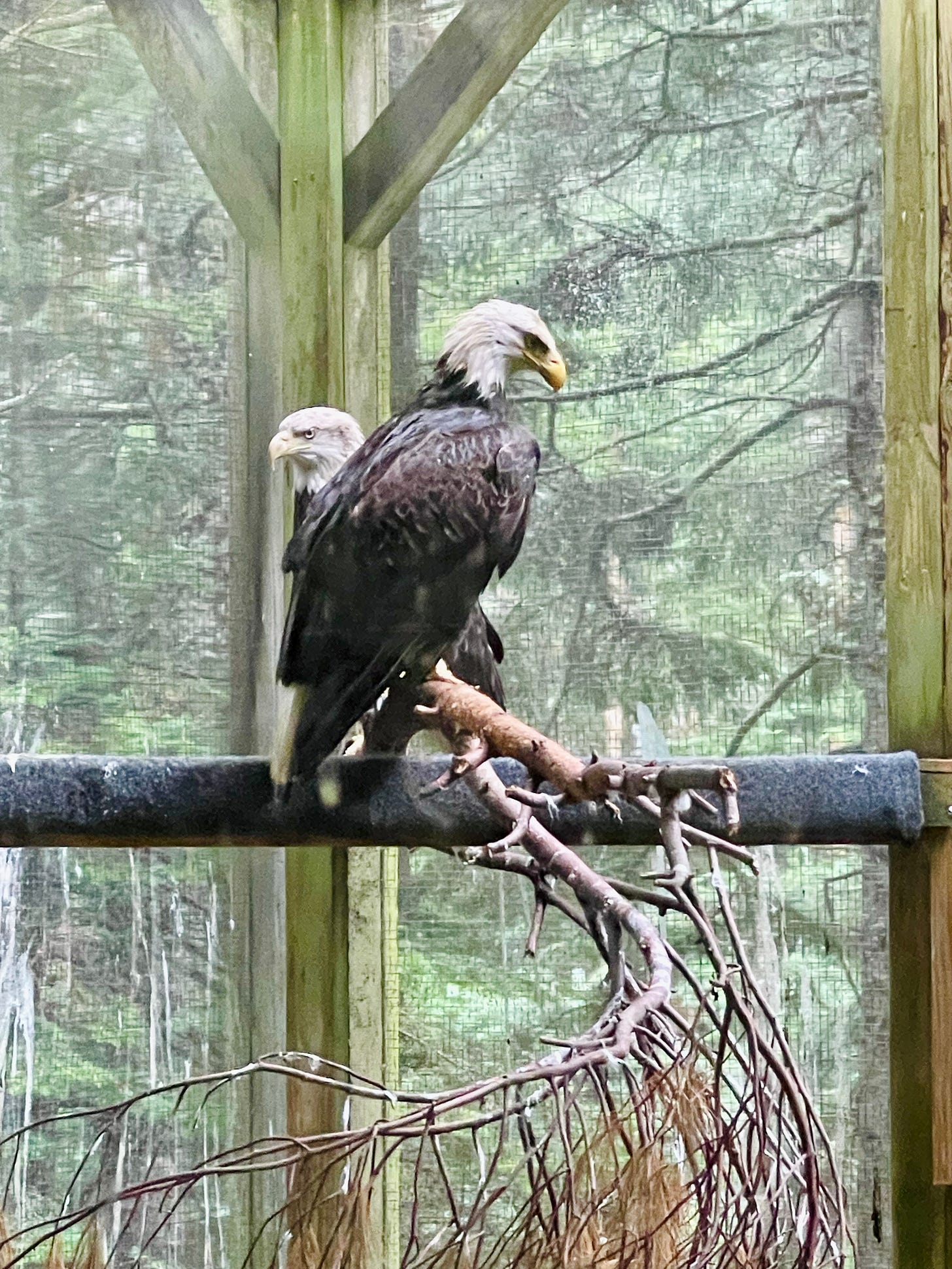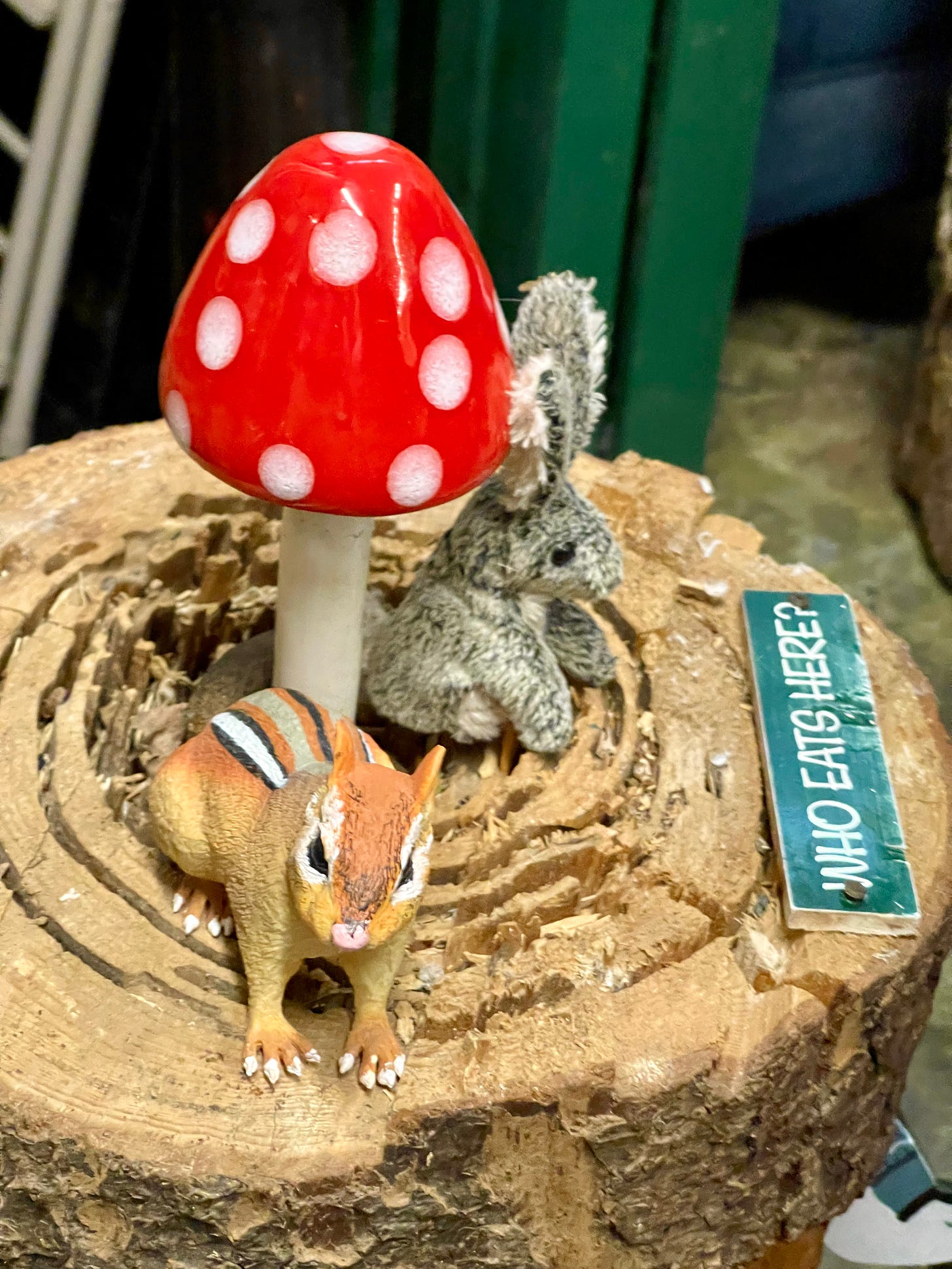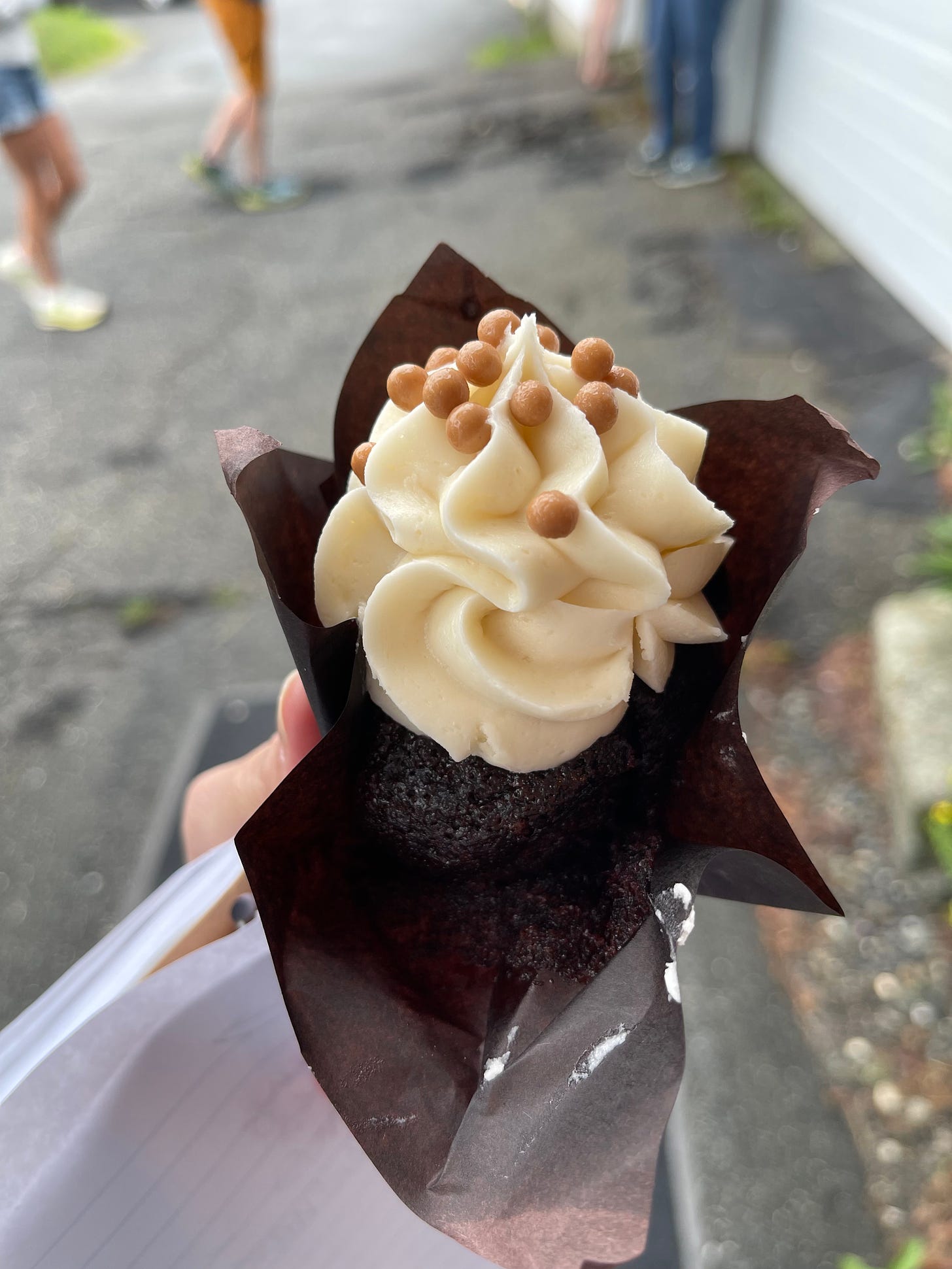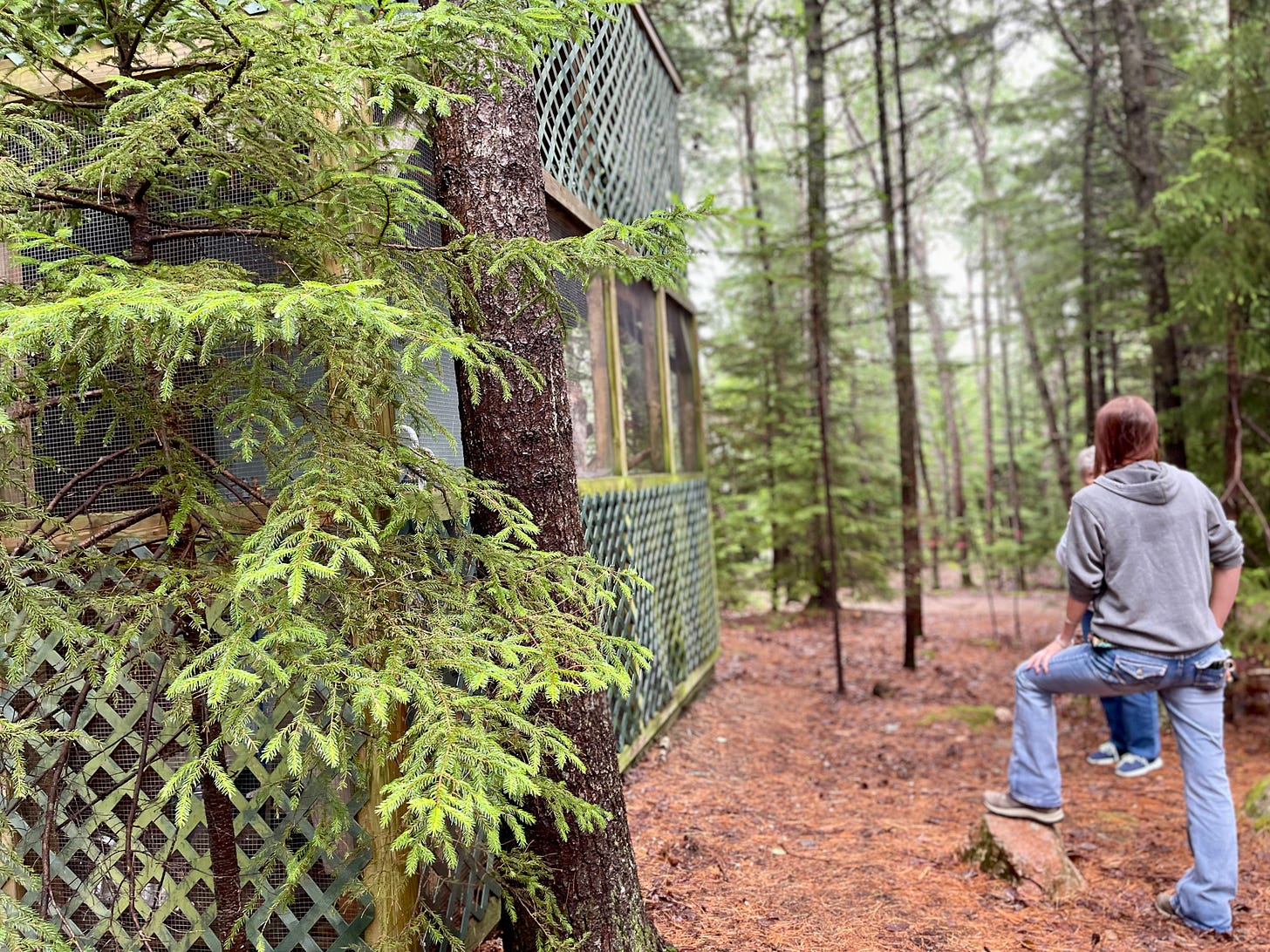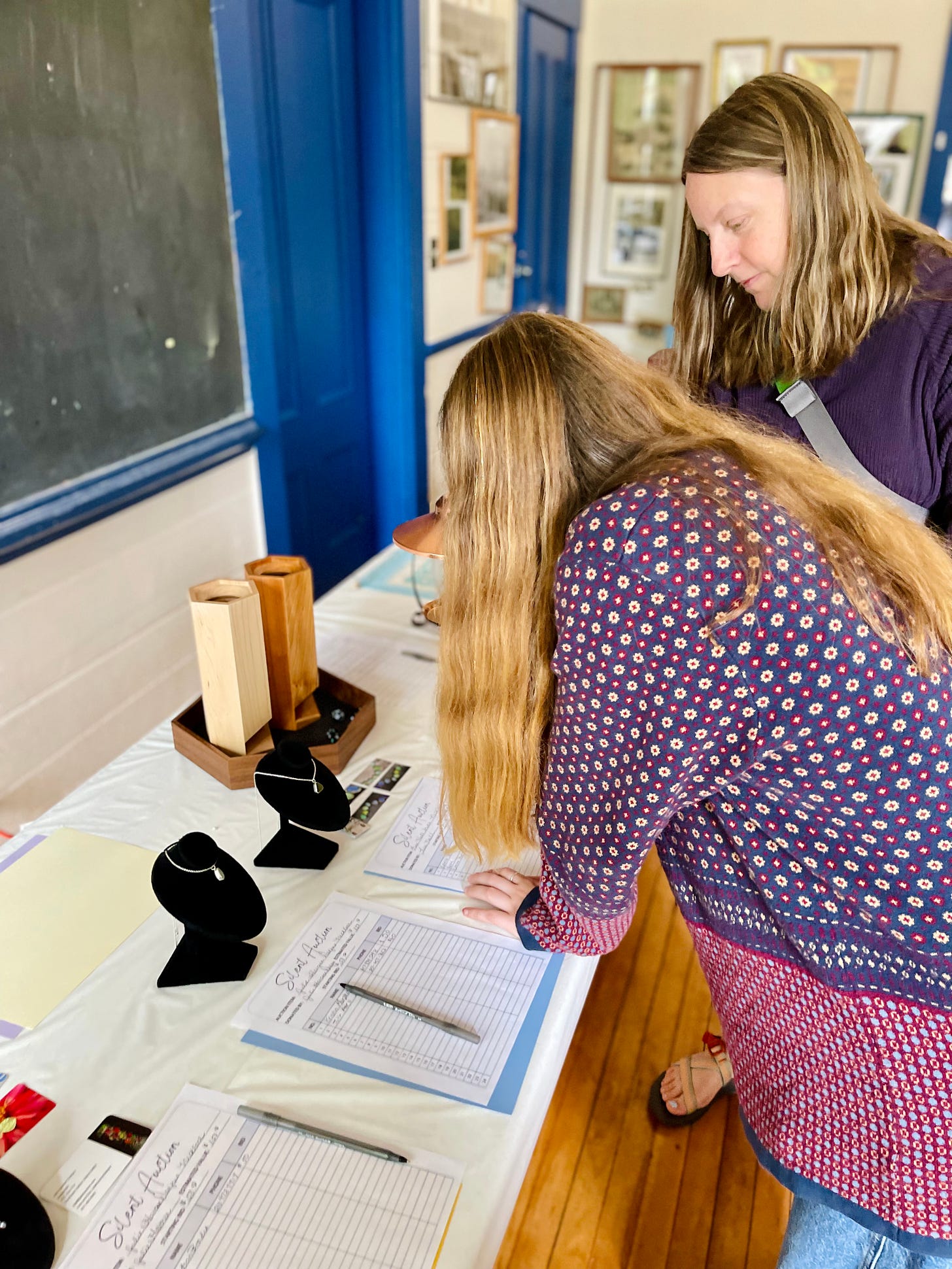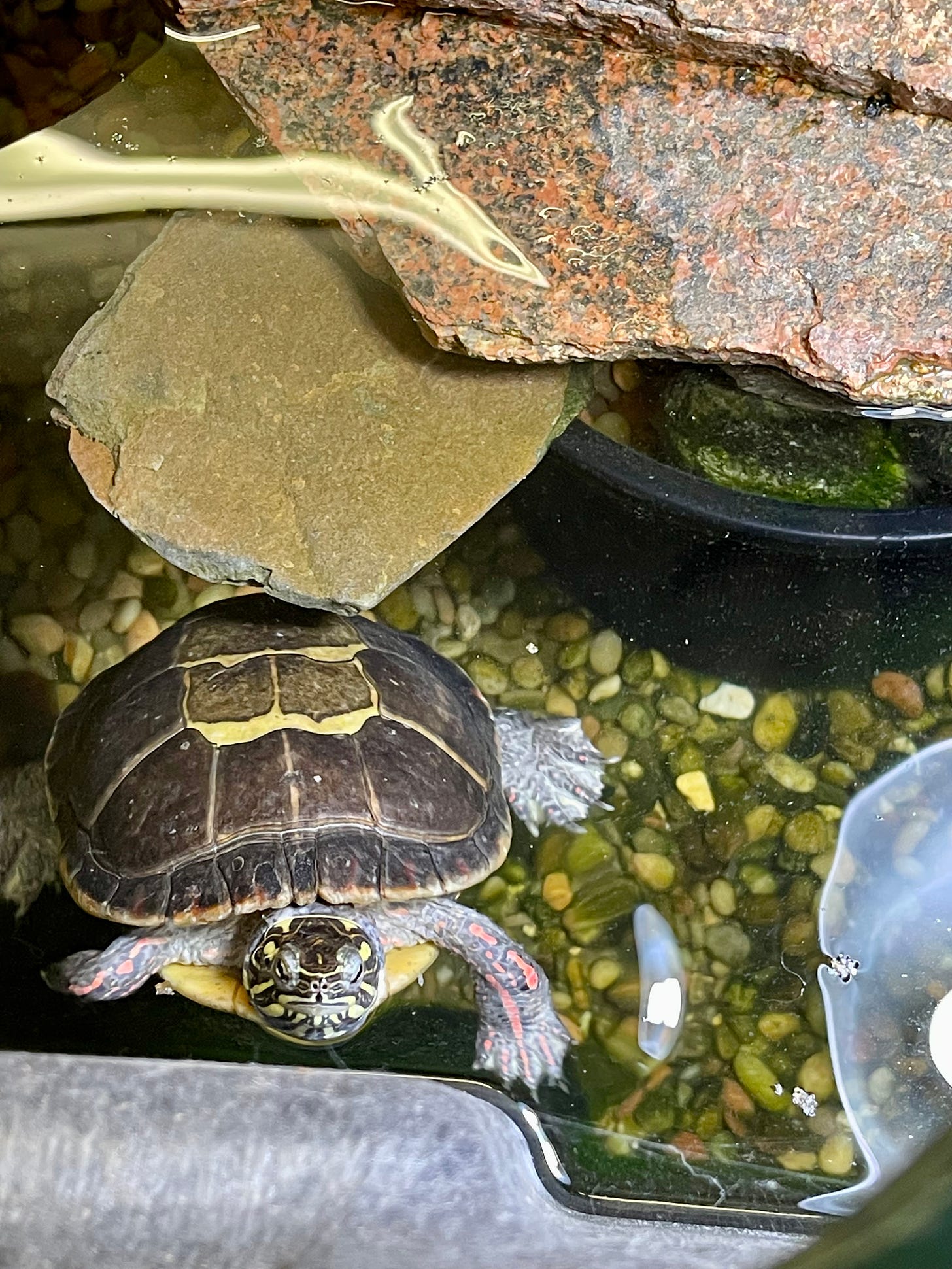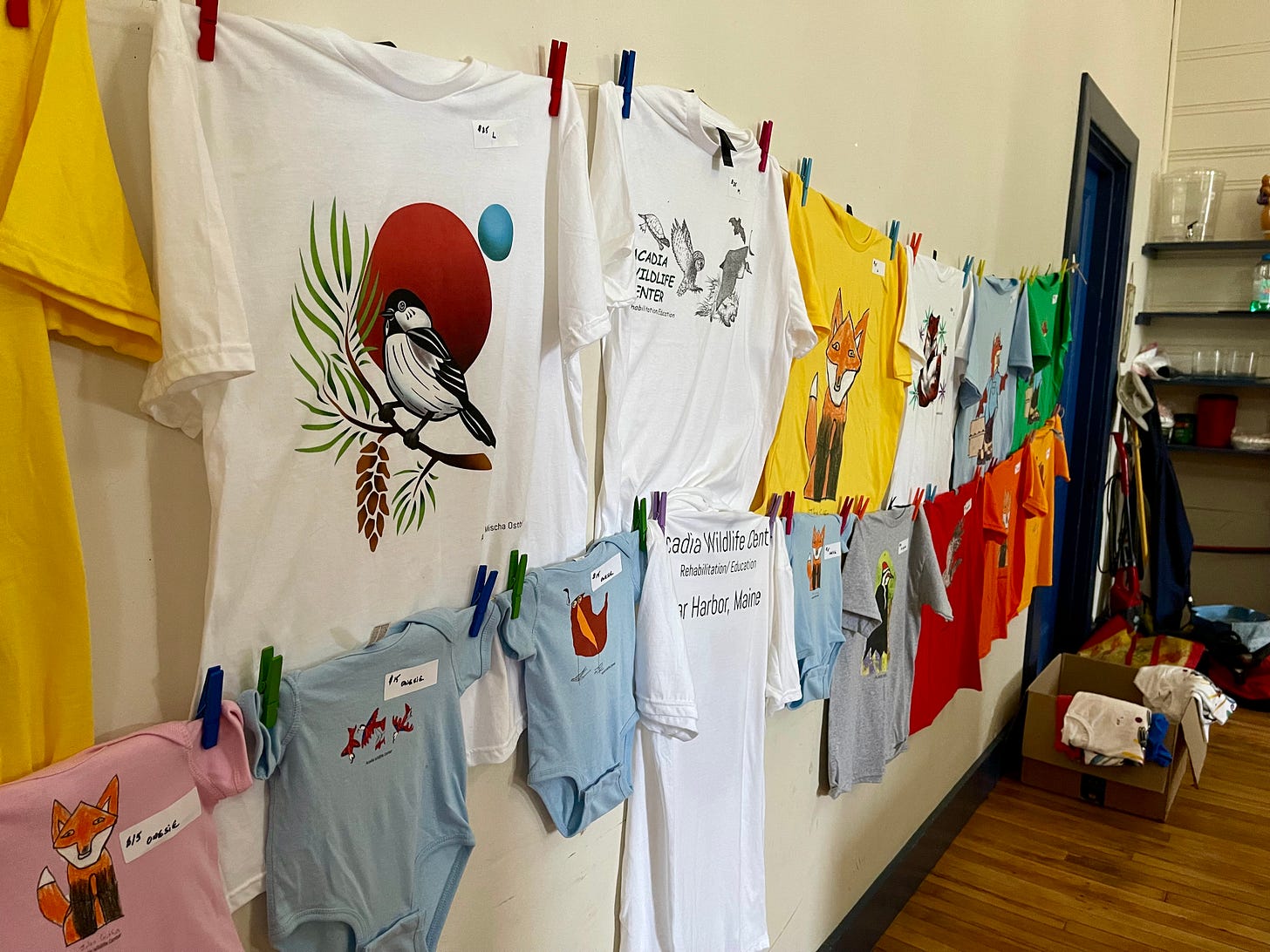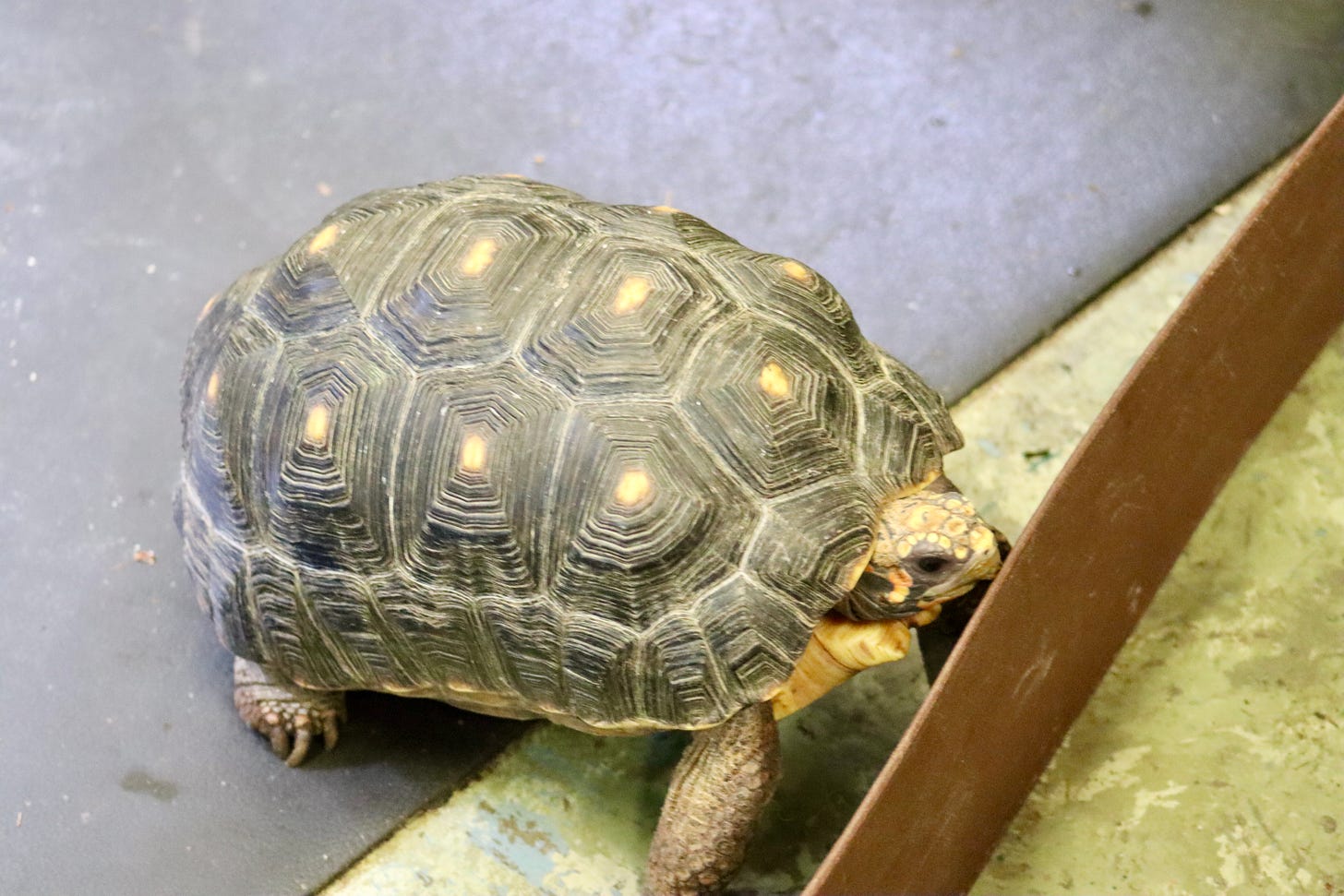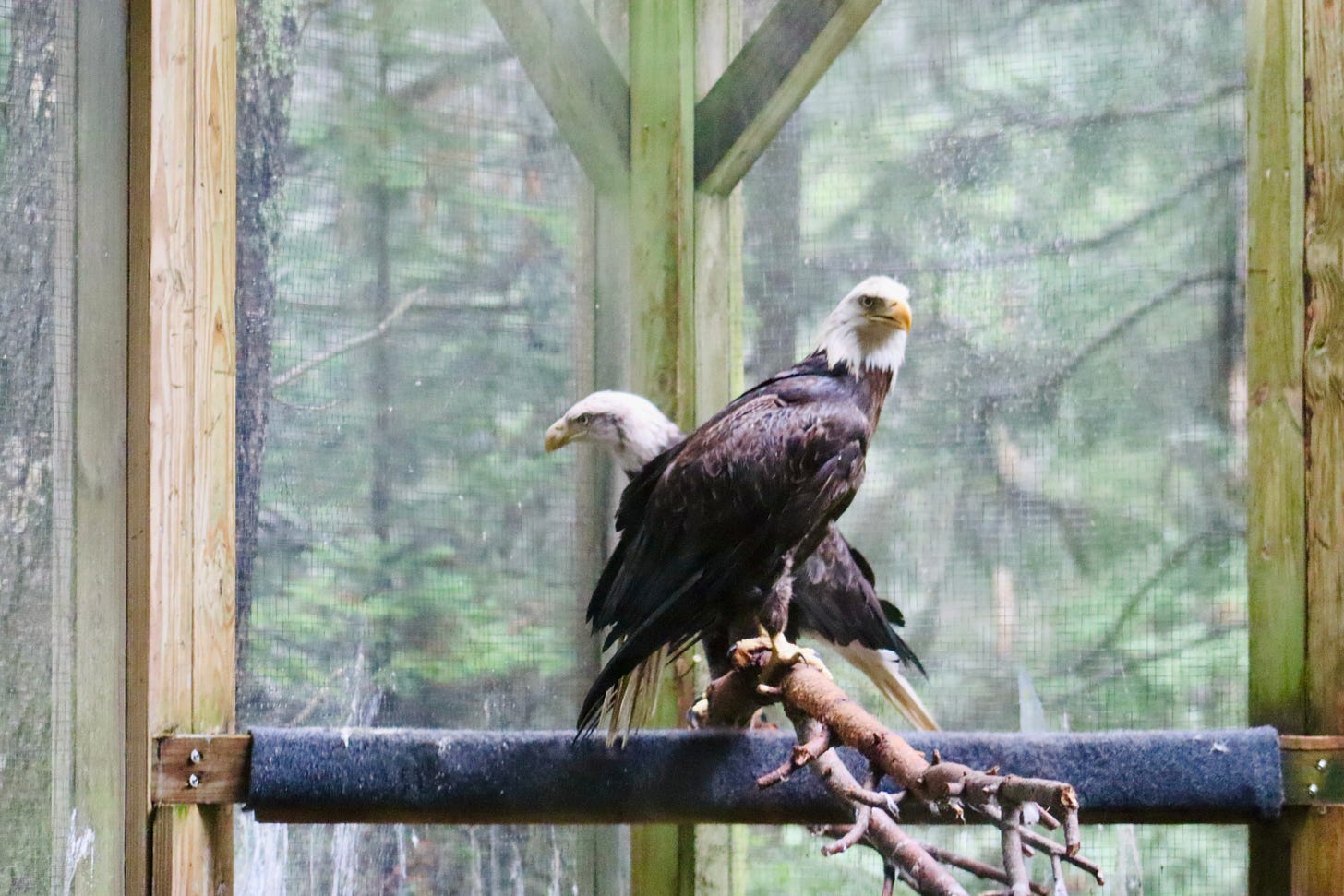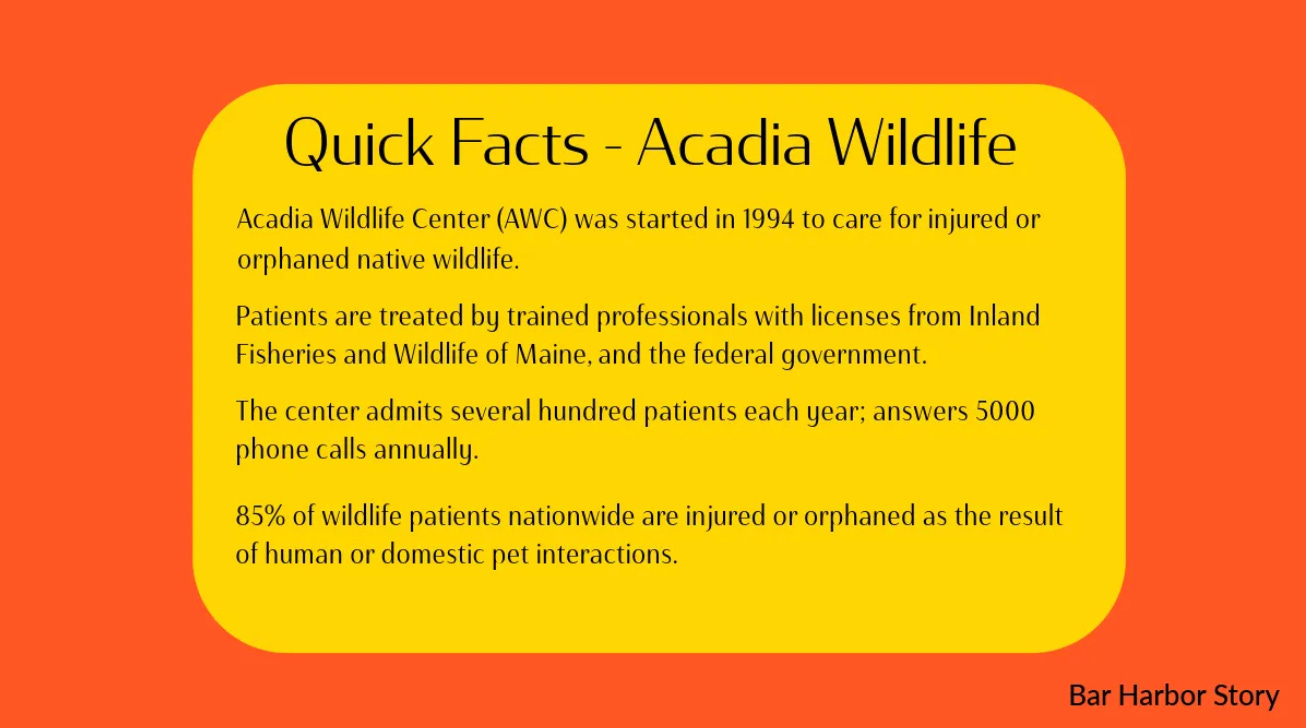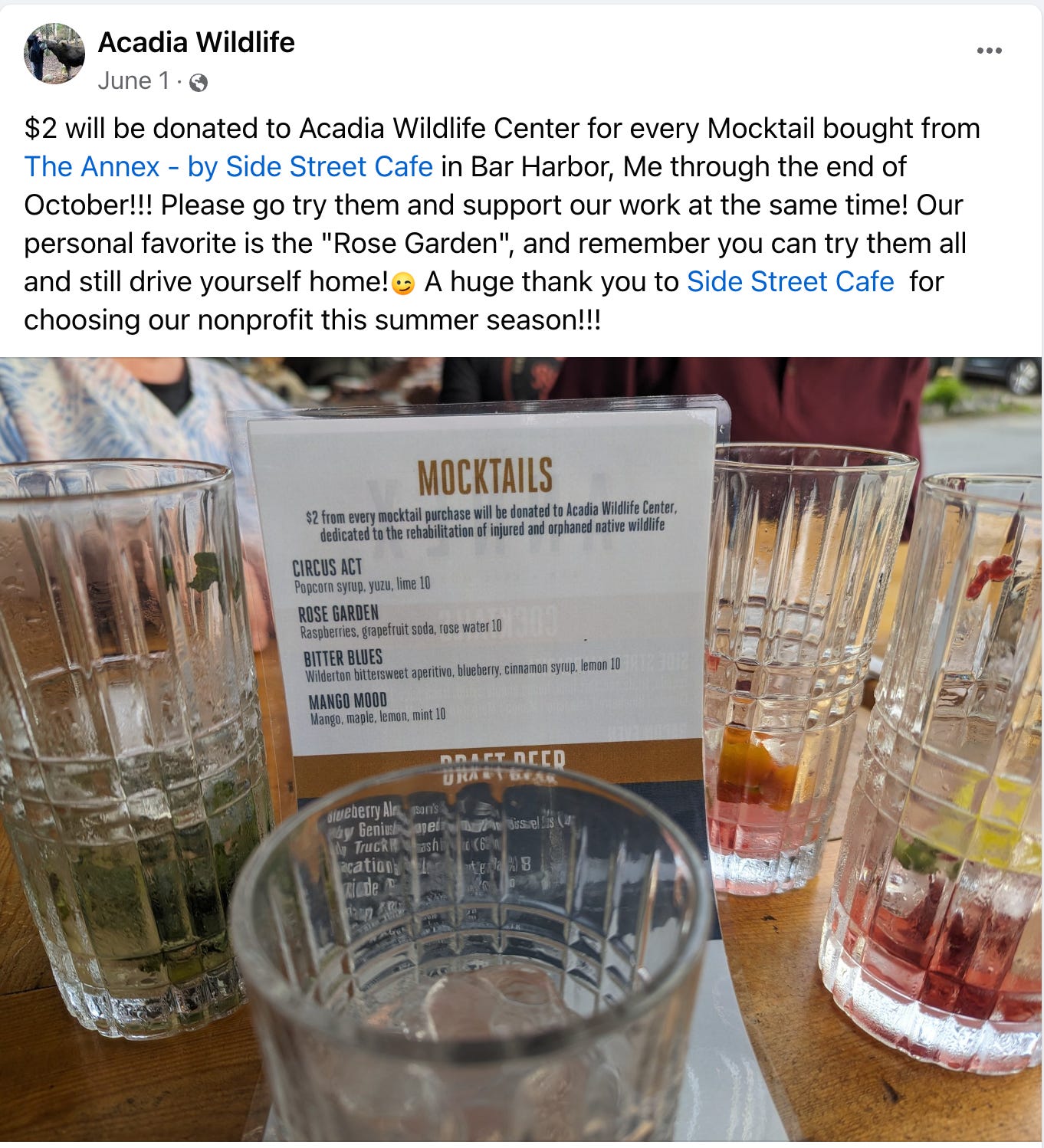For Thirty Years, They've Saved Lives And They Need Your Help To Keep Doing It
Acadia Wildlife Center Celebrates Its Birthday
TOWN HILL—“This is an awesome place,” Cal Bryer, a young man in a green t-shirt told Katie Baron, education director at Acadia Wildlife Center on Saturday during the center’s open house celebration.
The two stood right by the building that houses a fox on one side and a porcupine on the other. More humans clustered around the main building near a van that was shuttling visitors back and forth. Tours were going on inside. A toddler played in a mud puddle beneath the pine trees. A couple ventured by the bat enclosure, almost tiptoeing reverently.
“I have a history here,” Bryer explained as the porcupine Spike peered through its enclosure. “I brought in a fawn.”
Bryer is not the only one with a history at Acadia Wildlife, and he’s not the only person on Mount Desert Island and beyond who has come to the center hopeful, scared, worried, interested, enthused and usually looking for help.
A plaque by the front door is constantly updated with the patients the center has seen in the month. This month, though it’s only the first days of July, is a litany of wildlife: a porcupine, four chipmunks, a bobcat, nine grey squirrels, six red squirrels, six big brown bats, six raccoons, a saw whet owl, painted turtle, three snappers, three crows, a hummingbird, ten turkey eggs. The list goes on. And it goes on.
The center takes approximately 5,000 calls every year. At any moment, there are just around 75 animals on their Kitteridge Brook Road site. The calls and need often increase in the summer—to 60 or so calls a day.
Staff members talk to concerned callers, advise them, and then they also feed, clean and take care of animals’ medical needs.
Those needs never stop.
The animals come in one by one, usually. Almost 85% of all wildlife patients worldwide are injured or orphaned because of human activity.
Sometimes the patients have been hit by a car. Sometimes they’ve been hurt by a lawnmower. Sometimes no one is sure exactly what happened, but most people on Mount Desert Island know someone who has brought an injured animal to Acadia Wildlife Center.
For thirty years, on just 15 acres by Acadia National Park, the wildlife center has maintained a clinic for wildlife in need that are native to the area. Taking care of all those animals isn’t easy. It also isn’t cheap.
But it makes a difference.
That young man, Cal Bryer, said that he wanted to someday work with animals. He was studying for it now at Endicott College, focusing on environmental sciences. The center, its work, its existence? It made a difference to him—not just because the center took in that injured fawn, but because it has shaped Bryer’s own life.
On Saturday, at its annual open house, Acadia Wildlife Center gave visitors a glimpse into the Town Hill campus and what they do.
“This year’s open house was our best ever!” Executive Director Tony Mullane said. “Over 150 people attended and supported the cause. It was so amazing! I can’t believe I am saying this because of how much work goes into putting on an event like this, but I am looking forward to next year’s!"
Just how much work and how it was worth it were themes for the visitors as they learned about the center’s work, its staff, its volunteers, and its patients.
“Oh, look, a little baby owl, up there, right up there,” the woman enthused. She touched her own gray hair and then her cheek. “Do you see it? What a sweet little thing.” For a moment she was quiet and then she half-whispered, “She’s safe here now.”
Sixty percent of the animals they see, Mullane has said, are released into the world again, which is an incredibly high success rate. Others are euthanized almost immediately because there is no hope. Some animals stay months before being well enough to go back into the world. Some, like Jax, the fox, would never make it out in the world again. So, they stay.
As Medical Director Ann Rivers gave a tour inside the center, she told visitors, “Baby bats are in the incubator in the building.”
A turtle splashed behind her. Beyond her, two ball eagles waited on perches down a short, narrow hall.
“Tears in wings happen a lot,” she said. “They heal in time.”
They do, especially if there is a place for them to rest, to be protected, to convalesce.
“You work so hard,” one woman said.
Rivers nodded. “We do. We do.”
Sometimes, she admitted, she gets tired.
IT’S NOT EASY RUNNING A CENTER OR A CELEBRATION
On Saturday at the open house celebration, Mullane sat behind a white table selling raffle tickets to win a chance to witness one of the center’s animal releases.
Two days before, the center had participated in the Fourth of July parade. It got him, he said, when people cheered for the center.
“They knew who we were,” he remembered.
The love in the cheers was evident.
So much of the work of Rivers and Mullane happens up in the woods, away from town, away from a lot of people. It’s hard to hear the appreciation or fanfare for their efforts when they are so busy doing the actual work, day in, day out, at night. But that appreciation? It’s there. He hopes there will be more of it as they focus on community outreach this year.
"If people want to support the center's cause of healing injured native wildlife, I would ask them to make a monthly recurring donation through our website, it helps us meet the animals’ needs and plan for the future," Mullane said.
Begun by Coleen Doucette in 1994, Ann Rivers became the director of the center in 1997, continuing until she passed the reigns to Mullane, her son in September, 2023.
For thirty years, on just 15 acres by Acadia National Park, the wildlife center has maintained a clinic for wildlife native to the area in need.
At the Saturday open house, it was part birthday celebration and part fundraiser. Because of limited parking at the center, tourists were shuttled back and forth from the Town Hill Meeting House via a van that was made possible by Acadia Gem, which wanted to support the center because of the important work Rivers and Mullane do for the community. The silent raffle items were also supplied by supporters. ArtWaves set up a station for crafts while people waited for the shuttle. Mt. Desert Bakery sent cupcakes.
Mullane spent three hours loading up his car to get everything to the building. At close to the last minute, they decided to set up some merchandise, too. Anything to help raise the funds to help take care of the animals.
Animal care and rehabilitation isn’t cheap and it isn’t easy.
The community has helped make sure that the center has survived. In 2018, the community raised $4,602 in a GoFundMe page to create a bat habitat. The center is one of just a few sites in the state that rehabilitates bats. It is Maine’s first bat flyaway.
Over the years, the 10-by-10 cabin and bunny hutch on the 15 private acres in Bar Harbor has expanded to not just include the bat habitat. The small original room where Rivers did her medical work has been abandoned and now she works in a 1,100-square clinic and nature center. Outdoor enclosures help different animals recover from their ailments. The eagles have a flight pen. The loon has a water cage. The skunks have a bunch of tunnels to play in.
And a whole lot of animals have care and some humans have it, too. Kind acts shape lives. Caring for others shapes a community. Sometimes that’s done quietly and consistently, like at the center, but that doesn’t mean those acts don’t need support and the occasional bit of celebration and love.
All photos: Carrie Jones and Shaun Farrar
LINKS TO LEARN MORE
Acadia Wildlife can be reached at (207) 288-4960 from 9 a.m. to 4 p.m. according to its website, 9 to 5 according to its sign.
You can register for its events, read its blog, and get the latest from Acadia Wildlife Center on its brand-new website!
To donate directly click here.
How to tell if an animal needs help.
Acadia Wildlife’s Facebook page
ABOUT THE BAR HARBOR STORY
If you’d like to learn how to be a sponsor for the Bar Harbor Story (yes, we work super hard to give people free news because we care so much about our community, but we still need to survive), head over here.
If you’d like to donate to help support us, you can, but no pressure! Just click here.





